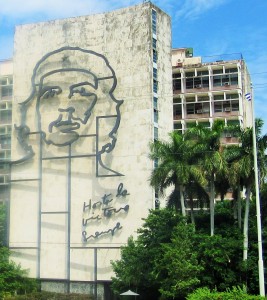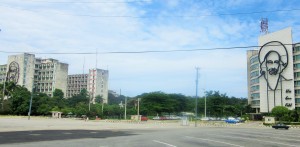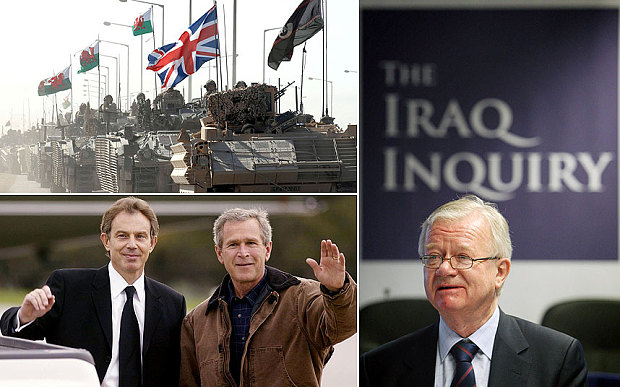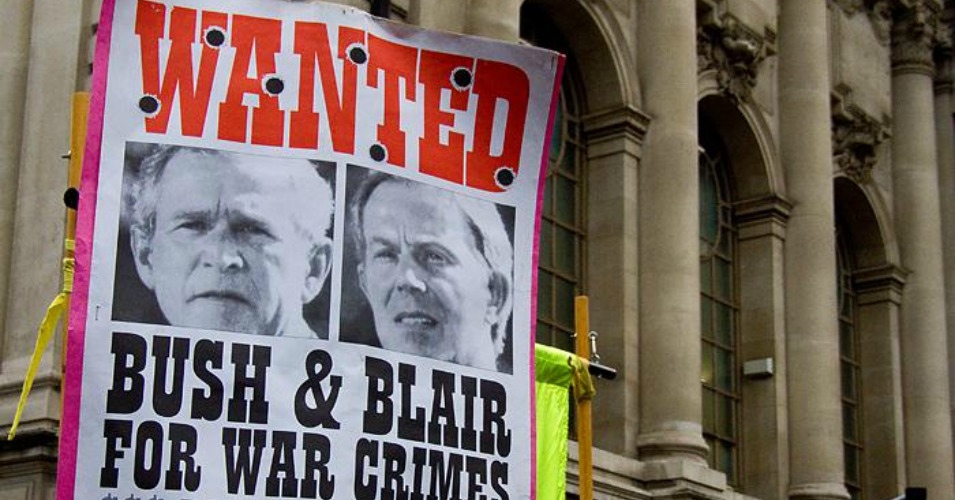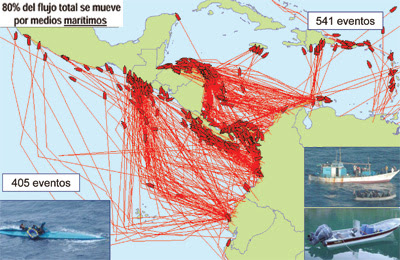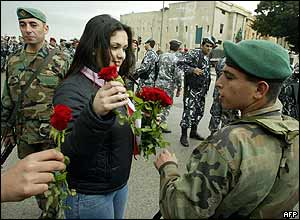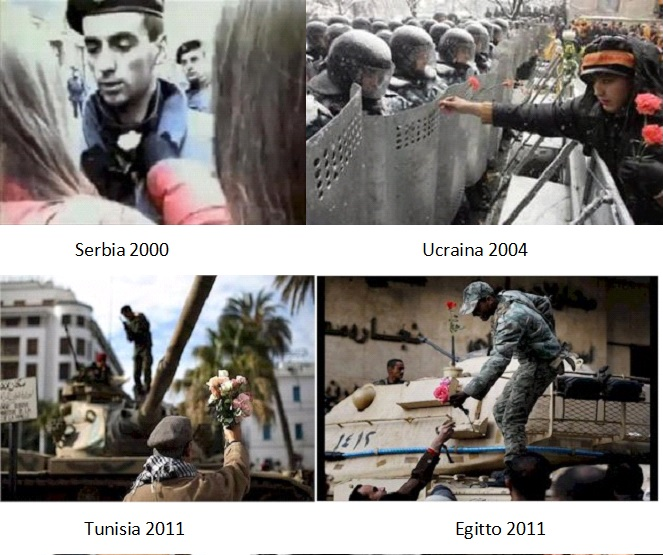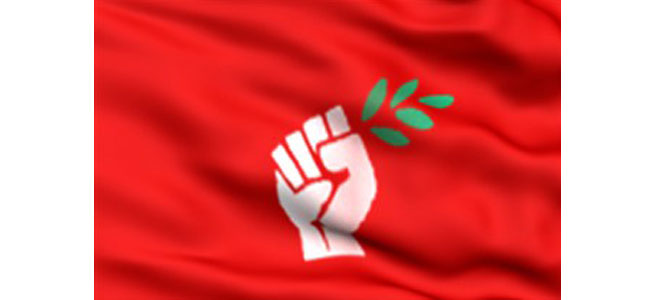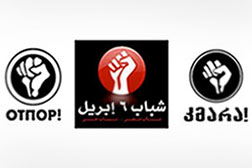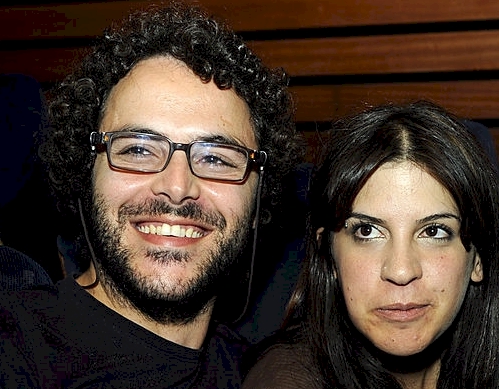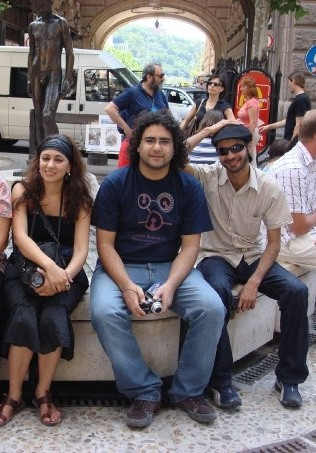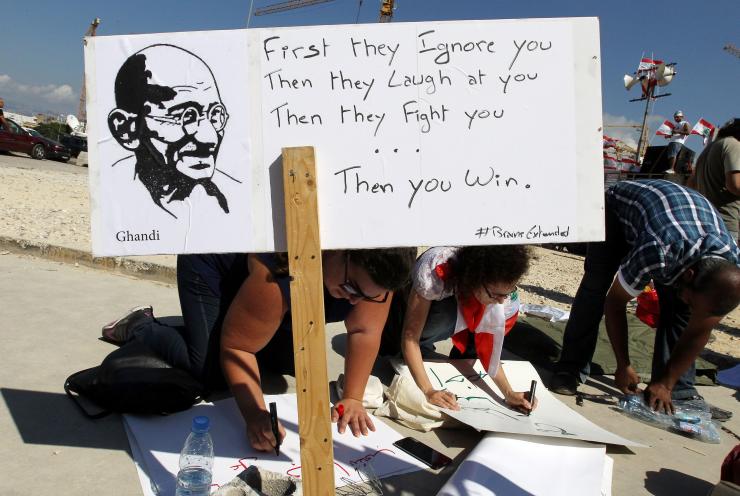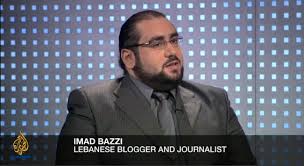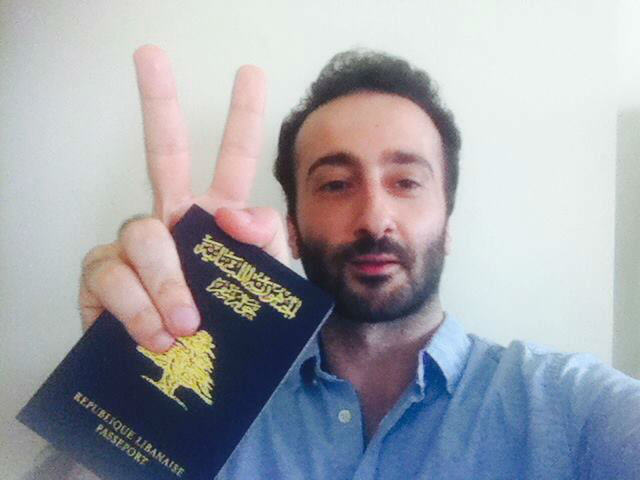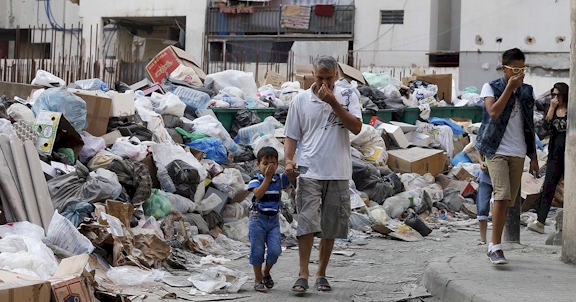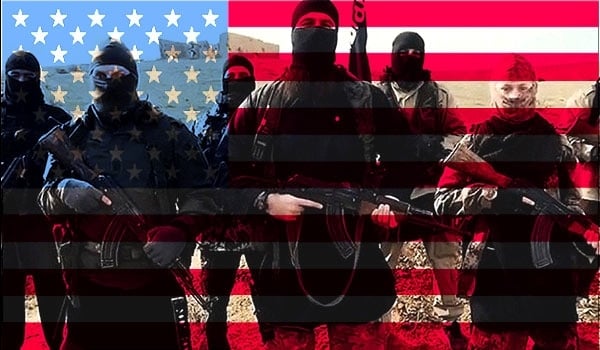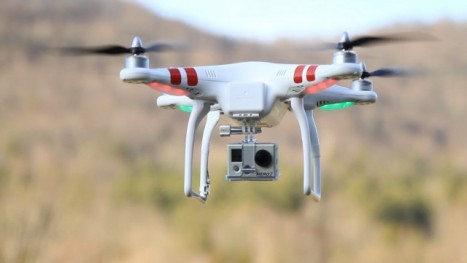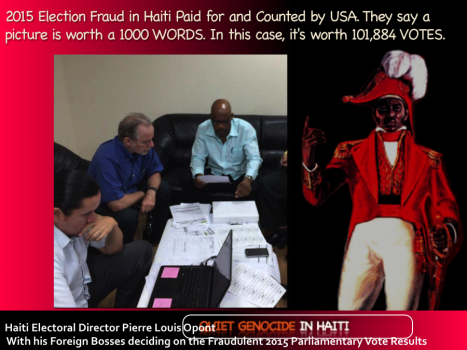Introduction: a moment to take stock of the ongoing legal battle
This summer, the Permanent Court of Arbitration (PAC) held the first oral hearings in the case brought by the Philippines against China concerning the South China Sea. Before considering any substantive issues, the PAC has to decide whether it has jurisdiction to issue a ruling.1 Earlier, the closing weeks of 2014 had seen three significant developments, with Hanoi making a submission to the PAC, Beijing publishing a position paper (while not submitting it to the Court), and the United States issuing a position paper of its own. We can also mention the continued interest in the South China Sea by other countries, including India and Russia. Taken together, it means that the time may have arrived to take stock of the arbitration case, updating our previous summer of 2013 piece “Manila, Beijing, and UNCLOS: A Test Case?”.2 At stake is not only this arbitration case, or even the entire South China Sea, but the role of international law in contributing to peaceful solutions to territorial conflicts, specifically whether it can help accommodate changes in relative power without recourse to military conflict.
Beyond the Philippines and China: Vietnam Makes a Move
After constant speculation on whether Vietnam would join forces with the Philippines and seek an international ruling on the South China Sea, Hanoi finally decided to make a submission3 to the Permanent Court of Arbitration (PAC) without joining Manila as a co-plaintiff.4 In its submission, Vietnam asked the PAC to assert its jurisdiction, give “due regard” to the country’s rights and interests in the Spratlys and Paracels, as well as in her EEZ and continental shelf, and declare China’s nine-dash line “without legal basis”. Hanoi’s submission could be seen as a response to Beijing’s position paper5 of 7 December 2014, spelling out the Chinese position, but not submitting it to the PAC in the Hague concerning Manila’s request for arbitration under UNCLOS (the United Nations Convention on the Law of the Sea).6 At the time of writing, the court is still considering whether it has the authority to rule on the case. A third relevant development in the last days of 2014 was a study7 by the US State Department, released on 5 December. Once again, it is clear that the legal battle launched by Manila is being closely followed by all the capitals concerned. In October 2015 US Assistant Secretary of State for East Asian and Pacific Affairs Daniel Russel said that should the PAC rule it had jurisdiction, both the Philippines and China should abide by its decision, adding that this was what the United States and the international community expected.8

|

|
| Manila sent a top level delegation to the oral hearings on jurisdiction this summer, which included (clockwise from top left) Senate President Franklin Drilon, Senior Associate Justice Antonio Carpio, House Speaker Feliciano Belmonte Jr., Foreign Affairs Secretary Albert Del Rosario, Justice Secretary Leila De Lima, and former AFP Chief of Staff Manny Bautista |
View of the Philippines’ delegation at the Peace Palace, in The Hague (the Netherlands) |
Once again, Viet Nam reiterates that Viet Nam has full historical evidence and legal foundation to reaffirm its sovereignty over the Hoang Sa [Paracel Islands] and Truong Sa [Spratly Islands] archipelagoes, as well as other legal rights and interests of Viet Nam in the East Sea [Biển Đông]. It is Vietnam’s consistent position to fully reject China’s claim over the Hoang Sa and Truong Sa archipelagoes and the adjacent waters, as well as China’s claiming of ‘historic rights’ to the waters, sea-bed and subsoil within the ‘dotted line’ unilaterally stated by China”. The spokesman also confirmed that Hanoi had “expressed its position to the Tribunal regarding this case, and requested the Tribunal to pay due attention to the legal rights and interests of Viet Nam.From day one, China has rejected the Philippines’ resort to international arbitration, arguing that the country had opted out of compulsory arbitration on sovereignty issues and that the suit violates bilateral agreements to solve disputes by negotiation. These were among the main arguments in Beijing’s statement laying down its position, a paper whose release some observers believe indicates that China cannot ignore international legal proceedings despite the fact that it has not been submitted to the PAC. The reaction to China’s paper was not limited to the Philippines; it also seems to have finally prompted Hanoi’s decision to join the battle on its own terms. On 11 December 2014, Vietnamese Foreign Ministry Spokesman Le Hai Binh made the following remarks9 in answer to questions from the press:
It should be noted that Hanoi did not join Manila as co-plaintiff in the case, choosing instead simply to lodge a statement with the Permanent Court of Arbitration. Some observers took this as indicative of a desire not to “alienate Beijing”,10 while at the same time defending the country’s position. Furthermore, an un-named “regional source” told the South China Morning Post11 that Vietnam’s action “is as much to protect Vietnamese interests vis-à-vis the Philippines as it is directed against China”, with another adding that “There is reportedly no consensus in the Vietnamese Politburo on this subject. This is probably as far as the Politburo is prepared to go”. The same HK newspaper also quoted Rodman Bundy, a lawyer who believes that Hanoi’s statement “should be ignored by the tribunal given that Vietnam has no standing in the arbitration”, adding that the move was “a cat-and-mouse game going on outside the strict procedure of the arbitration”. Australian Professor Carlyle Thayer also spoke to theSouth China Morning Post, saying that Vietnam’s move was a way for the country to put forward her interests, adding that this amounted to “a cheap way of getting into the back door without joining the Philippines’ case”. Gregory Poling, South East Asia analyst at Washington-based think tank Center for Strategic and International Studies, believes that Vietnam’s statement had the same goal as “the Chinese position”, namely to “ensure that the justices hearing the case consider the arguments contained in the document, but do so in a way that is less provocative than Vietnam actually joining”.12
On 12 December 2014 Foreign Ministry Spokesperson Hong Lei responded to a media question on Hanoi’s move. After repeating Beijing’s mantra about China’s “indisputable sovereignty over the Nansha Islands and their adjacent waters” and the “indisputable fact that the Xisha Islands are an integral part of China’s territory”, he said that “China will by no means accept Vietnam’s illegal and invalid sovereignty claims over Nansha and Xisha Islands”. Hong called on Hanoi to “work with China to resolve relevant disputes over the Nansha Islands through consultation on the basis of respecting historical facts and international law so as to jointly safeguard peace and stability in the South China Sea”, insisting that Beijing would not take part in the arbitration proceedings for reasons previously explained in detail in the 7 December position paper, and that “China’s position will not change”.13
Hanoi’s decision to address the PAC may have been a compromise outcome directed not just at Beijing but also at Manila. The decision took place in parallel with high-level meetings with China and others in the South China Sea. Perhaps a good starting point to look at these contacts would be the trip to Beijing in August last year by Le Hong Anh, a special envoy of the Secretary General of the Vietnam Communist Party (VCP). As Carl Thayer notes, this “marked an important inflection point in Sino-Vietnamese relations following the HD 981 oil rig crisis of the preceding three months”.14 Anh met Xi Jinping, Liu Yunshan (secretary of the CCP Central Committee and a member of the Politburo Standing Committee), and Wang Jiarui (vice chairman of the National Committee of the Chinese People’s Political Consultative Conference). These meetings led to more concrete agreements, and in particular in the words of Vietnam’s Foreign Affairs Ministry “three important points”, namely enhanced “bilateral ties between parties and states, boosting sound and stabilised relations between the two countries”, promoting bilateral visits, and working to “restore and enhance bilateral relations in all fields” and to “seriously implement the agreement on the basic principles guiding the settlement of sea related issues between Viet Nam and China; to effectively implement government-level negotiations on Viet Nam-China borders and territory; to seek basic and long-term solutions acceptable to both sides; to effectively control sea disputes and not act to complicate or expand disputes; to maintain peace and stability in the East Sea; and to maintain overall Viet Nam-China relations”.15 Furthermore, the meetings led to “the resumption of bilateral contacts, high-level visits and a meeting of government leaders”. In addition to the 16-18 October Vietnamese senior military delegation’s trip to China, discussed below, State Councilor Yang Jiechi traveled “to Hanoi to co-host the 7th Joint Steering Committee meeting on October 27” plus the 10 November meeting, “on the sidelines of the APEC Summit in Beijing”, between Chinese President Xi Jinping and his Vietnamese counterpart.16
In December 2014, the first visit to Vietnam by a leading Chinese official that year took place. Yu Zhengsheng (chairman of the National Committee of the Chinese People’s Political Consultative Conference) traveled to the country, invited by the Communist Party of Vietnam Central Committee and the Fatherland Front of Vietnam. According to Xinhua, the trip was designed to “to further mend bilateral ties after recent tensions” and the May 2014 anti-Chinese riots. The report stressed the “common border, similar culture and high economic complementarity” with China, “Vietnam’s largest trade partner for nine years in a row, while Vietnam has become China’s second largest trade partner in the Association of Southeast Asian Nations”. The text concluded saying that “there is reason to believe that if the two nations, especially Vietnam, cast their eyes on improvement and development of relations instead of aggravating differences, benefits will not only be brought about to themselves but also to the whole region”.17 This is in line with many Chinese injunctions to neighbors to work together to improve relations, while not offering any concrete solution to the territorial disputes in the South China Sea. Reporting on Yu’s meeting with Vietnamese Prime Minister Nguyen Tan Dung in Hanoi on 26 December, Xinhua chose the headline “China, Vietnam agree to properly settle maritime disputes”.18 Here the word “properly” may perhaps be a thinly-disguised criticism of international arbitration and other dispute resolution mechanisms not to Beijing’s liking. Yu described the maritime issue as “highly complicated and sensitive, which requires negotiations to manage and control differences”, adding “Megaphone diplomacy can only trigger volatility of public opinion, which should be avoided by both sides”. 19
Commenting on the succession of high-level meetings, last year, and in particular the succession of two joint Steering Committee for Bilateral Relations meetings just a few months apart (in June and October), Thayer pointed out that this was “an indication that China’s top leaders are willing to engage with Vietnam to reset their bilateral relations, which were severely strained by the oil rig crisis”.20 After some rumors,21 it was confirmed that Vietnamese Communist Party leader Nguyen Phu Trong would be visiting China in early April.22
At a lower level, but providing opportunities for discussion, was the 65 anniversary of Sino-Vietnamese diplomatic relations in January,23 where both countries’ friendship association heads stressed their wish for closer relations, chairman of the Viet Nam Union of Friendship Associations Vu Xuan Hong saying “it’s necessary to have more friendly exchanges between Vietnam and China to improve trust and narrow differences. Let’s work for more appropriate cooperative measures for mutual benefit and implement an action program for the Vietnam-China strategic partnership”.24
In addition, Vietnam and China regularly hold bilateral cooperation meetings on a number of issues, including the fight against drug trafficking.2526.27
In the military sphere, the last days of 2014 brought news that “the Chinese and Vietnamese navies will continue their joint patrol in the Beibu Gulf in 2015 to safeguard its security and stability”.28 Earlier in October 2014, following an “unexpected three-day visit to Beijing by a 13-member high-level Vietnamese military delegation from October 16-18, led by Minister of National Defense General Phung Quang Thanh” the two Defense Ministries agreed to set up a direct hot line. According to Thayer, “This is an indication that both sides realized how quickly an incident could spiral out of control and lead to deadly force”. He also noted that “From Vietnam’s point of view, it was important to demonstrate domestic political unity by bringing such a large delegation to Beijing”, 2”.29
In short, both China and Vietnam have engaged in major efforts to prevent tensions from getting out of hand. Yet no progress is apparent in the ultimate factor fanning the flames, that is the maritime territorial dispute between the two countries. Some observers have noted that Hanoi may be split on how to deal with China, and more generally the direction of the country’s foreign policy and military alliances. While this seems to be the case, we should be careful not to confuse disputes on how to manage a complex set of relations in search for balance and a maximization of national power, with disputes over ultimate goals. It is more likely that Vietnamese leaders are split on how to deal with China, and other countries such as Russia, the US, and India, rather than on the ultimate goal of embracing a wide range of alliances in order to prevent falling prey to a bigger neighbor. This is a traditional pillar of the country’s foreign policy, hence Vietnam seeks to develop bilateral relations with a wide range of actors, playing one off against the other when necessary, including China and India.30 Stephen Blank notes that “Vietnam not only enjoys strong U.S., Russian, and Indian diplomatic and military support, it is buying weapons from Russia, Sweden, and Israel, among others”.31 To this we must add active participation in a large number of international organizations. At a conference in August, Prime Minister Dung described the country’s foreign policy as resting on “independence, self-reliance, multilateralism, diversification, and international integration”.32
In addition to the already noted lack of substance in many Sino-Vietnamese statements, it is not clear to what extent either side has margin for compromise. Many voices in both China and Vietnam stand ready to criticize their respective governments for any perceived softening and betrayal of the national interest. For example, in August 2014, in the wake of the announcement of a trip to China by Politburo member Le Hong Anh, Nguyen Trong Vinh (former Vietnamese ambassador to China) said “China will never compromise. Their removal of the oil rig was only temporary. They will never abandon their wicked ambitions of taking a monopoly over the East Sea”, while Nguyen Quang A (an economist opposed to the government) “said he welcomed the talks but was concerned that Beijing might be trying to persuade Hanoi to drop its threat of taking international legal action against China’s territorial claims”.33 Vietnamese dissenters often attack Hanoi for the alleged failure to stand up to Beijing, while not a few Chinese netizens voice strong criticisms on foreign policy. There seems to be a recognition in leadership circles on both sides that domestic public opinion, if unchecked, may prove destabilizing, restricting room for maneuver. As freelance journalist Roberto Tofani noted in 2013 “Beijing and Hanoi must now also face rising nationalism among their citizens, including periodic anti-China street protests in Vietnam and widespread anti-Vietnam rhetoric on Chinese citizens’ private blogs and Facebook pages related to the South China Sea disputes”.34
In support of Vietnamese claims in the South China Sea, Hanoi has often employed French maps and French documentation to emphasize continuity of territorial boundaries from the colonial to the post-colonial era. Vietnamese observers have stressed the need to examine historical evidence, in a wide sense of the term, to counter similar efforts by Beijing, in a view also supported by some experts in other countries. For example, following Bill Hayton’s “The Paracels: Historical evidence must be examined” and subsequent response by Li Dexia and Tan Keng Tat (“South China Sea disputes: China has evidence of historical claims”)35, Vietnam’s Nguyen Hong Thao wrote in support of Hayton, arguing that Chinese “evidences should not be accepted without debating and examining”, and defending the view that Song Dynasty maps “unanimously described Hainan island as the Southern terminus of China”.36
Nguyen Hong Thao refers to the 13thcentury Song Dynasty Chinese book “Chu Fan Chi / Zhu Fan Zhi” (Notes for Foreigners or Records of Foreign Peoples) by Chao Ju-kuo (Zhao Ju Guo). He rejects Chinese claims that the book proves that the Paracels were part of China’s territory at the time, noting that “‘Chu Fan Chi’ was about ‘vassal kingdoms’ or ‘barbarous tribes’ … Consequently, it is obvious that the lands recorded in this book were not Chinese”. While the original text of the book has been lost, some commentators, writing in other contexts, such as China’s contacts with Africa, have noted that it addressed what were considered foreign lands.37
Like their Chinese counterparts, Vietnamese authors use public displays of maps and documents as another weapon in this struggle. For example in September 2015 one such exhibition took place in Da Lat city, with the goal of proving Vietnamese sovereignty over the Hoang Sa (Paracel) and Truong Sa (Spratly) archipelagos and featuring “UNESCO-recognized woodblocks from the Nguyen Dynasty, bibliographies and atlas collections published by many countries in different times, notably an atlas issued by China’s Qing dynasty in 1906 and subsequently used by the Republic of China”, as well as documents from different Vietnamese dynasties, the Republic of Vietnam, the Socialist Republic of Vietnam, and Western countries.38
Vietnam relies on two kinds of Western sources. On the one hand, records of missionaries and traders, and, as noted, on official documents from the French colonial administration and other powers.
Duy Chien, in a 2014 article draws on the writings of foreign missionaries and navigators.39 For example, a French missionary traveling to China onboard the ship Amphitrite wrote in a 1701 diary: “Paracel is an archipelago belonging to the Kingdom of Annam. It’s a terrible submerged reef, stretching hundreds of miles.”40More directly related to sovereignty, or at least to sovereignty claims, are “Notes on the geography of Southern Vietnam”, by Priest Jean-Louis Taberd (former apostolic vicar of Cochinchina from 1824 to his death in 184041 and interpreter of King Gia Long). Published in 1837, the Notes describe the 1816 flag-raising ceremony on the Paracels by King Gia Long: “Paracel or Hoang Sa islands is an area crisscrossed by small islands, reefs and sand, seems to be extended to 110 North latitude and around 1070 longitude… Although this is an archipelago covered by nothing else but islands and reefs, and the depth of the sea promises [more] inconveniences than advantages, King Gia Long still thought that he had the right to expand his territory by that pathetic merger. In 1816, the King held a solemn flag hoisting ceremony and formally took possession of the reefs, with a certain belief that no one would struggle with him…” J.B. Chaigneau also mentions the 1816 ceremony.42
The Nguyen Dynasty’s exercise of tax powers over foreign ships passing through the Hoang Sa (Paracels) area is perhaps among the strongest pieces of historical evidence that the Vietnamese advance, reinforced by the fact that it was recorded in non-Vietnamese sources. Thus Gutzlaff, a member of the Royal Geographic Society of London, in 1849 wrote in the Society’s Journal that “Katvang lies 15 – 20 nautical miles from Annam coast and spreads on 15 – 17 degrees north latitude, 111 – 113 longitude, then the King of Annam claims ownership of these islands, including rocks and reefs dangerous to marine navigation… Annam government benefits from setting up a patrol boat and a small garrison to collect taxes and protect fishermen operating in their water…”. This source is interesting because Gutzlaff acknowledges both a long-standing presence by Chinese fishermen in the area, as often insisted on by Beijing, and the exercise of state power by the Vietnamese in the region: “From time immemorial, junks coming largely from Hainan have annually visited all these shoals, and proceeded in their excursions as far as the coast of Borneo. ”.
The white paper published by the Republic of Vietnam in 1975 insisted on the actions described in French sources,43and the Socialist Republic of Vietnam has followed the same line. Furthermore, Hanoi has been keen to emphasize that French domination over Indochina not only did not interrupt the exercise of sovereign powers but actually reinforced it, since the new authorities kept exercising sovereign rights “After France and Vietnam had signed the Protectorate Treaties of March 15, 1874 and June 6, 1884”, including “building and operating lighthouses and meteorological stations, establishing administrative delegations responsible for the archipelago attached to Thua Thien Province (Annam), and granting birth certificates to Vietnamese citizens born in the archipelago”. France went as far as requesting that China solve the dispute by international arbitration (French Note Verbale dated February 18, 1937 addressed to China), but the proposal was refused. Paris also protested in 1947 after the Republic of China occupied the year before Phu Lam (Woody) Island, in the Paracels, and although a request for negotiations and third-party adjudication was refused, ROC forces later withdrew.44”. Having said this, some Vietnamese accounts of the colonial years complain that French authorities were too passive in light of Chinese, and later Japanese, attempts to encroach on islands considered to be Vietnamese, and explain how it was only after such attitude was denounced in the press that they firmed it up. From 1931 to 1933 journalist Cucherousset published seven articles in L’Éveil Économique de L’Indochine (issues 685, 688, 743, 744, 746, 777 and 790) criticizing Governor Pasquier for his feeble defense of sovereignty over Hoang Sa. He wrote “Annam’s sovereignty over the Paracel Islands is undeniable”, while asking the governor “Which obstacles have prevented Annam from claiming sovereignty over the Paracel Islands, which they have owned for hundreds of years? Do we have to wait until the Japanese exploit the last tons of phosphate? Or is it true that the Japanese have paid a reasonable commission?”. Many other newspapers, both in metropolitan France and Indochina (the latter in both French and Vietnamese), regularly reported on the disputed islands, listing the grounds to oppose Chinese and Japanese designs.45
Vietnam’s South China Sea narrative also relies on international treaties signed by Paris, such as the 1887 Conventionon the land border, signed by France and theQing dynasty, and according to which islands located east of a red line (described on a map attached to the treaty) belonged to China. Duy Chien argues that “This red line described on the map attached to the Convention was only 5 kilometers long, compatible with the width of the territorial waters of 3 nautical miles at that time, and functioned to demarcate the onshore islands within Tonkin Gulf. If following the [Chinese] authors’ interpretation, this line could be extended boundlessly, crossing the Tonkin Gulf, and not only Paracels and Spratlys but also Hue, Da Nang and even all the islands along the Central Coast of Vietnam or Con Dao island, also belonged to China consequently”. 46
Concerning the 1943 Cairo Declaration, Vietnam’s position is that it did not imply any transfer of disputed islands or other features in the South China Sea to China, stressing that “no mention was made of Truong Sa (Spratly Islands) and Hoang Sa (Paracel Islands)” and that the Republic of China “a party to the Conference …did not have any reserve or any statement of its own on the restored territories”.47
As is clear in a recent documentary by Ho Chi Minh City TV, Vietnam sees the East Sea, including the recovery of lost islands and features, as a matter of “vital space” (không gian sinh tồn) and “struggle for existence” (tranh đấu sinh tồn), expressions that appear often in the script. Commenting on the documentary, François Guillemot notes that “the documentary film prioritizes the history of the Paracels (Hoang Sa), the Vietnamese islets lost in 1974, while people are aware that China had effective control of that territory after that date”, concluding that “Vietnam has put its ‘struggle for existence’ in a long-term perspective, which, in the past, has shown a certain efficacy”.48
The Malaysian angle: Manila tempts Kuala Lumpur with a downgrade of its Sabah claims
Another Filipino move connected to the international arbitration case is the offer to Malaysia, in a Note Verbale, to review its protest against the 6 May 2009 joint Vietnamese-Malaysian submission to the UN Commission on the Limits of the Continental Shelf (CLCS), containing a claim by Kuala Lumpur of an extended continental shelf (350 nautical miles from the baselines) projected from Sabah. In exchange for this, Manila is requesting two actions that it believes would reinforce her case against China: First, to “confirm” that the Malay claim of an extended continental shelf is “entirely from the mainland coast of Malaysia, and not from any of the maritime features in the Spratly islands”. Second, to confirm that Malaysia “does not claim entitlement to maritime areas beyond 12 nautical miles from any of the maritime features in the Spratly islands it claims”. According to former Philippine permanent representative to the United Nations Lauro Baja Jr., if Malaysia accepts the deal, the Philippines’ claim to Sabah will be “prejudiced”, adding “We are in effect withdrawing our objection to Malaysia’s claim of ownership to Sabah”.49
Manila’s proposal is important for several reasons. First, because it illustrates how the Philippines is trying to involve as many countries as possible in its attempt to have the 9-dash line declared to be incompatible with international law. Second, because in so doing it is ready to compromise one of their own territorial claims, thus showing they are aware that they may have to sacrifice some of their long-standing policies in order to arrest what they consider to be the main threat to their territorial integrity. Third, given Malaysia’s reluctance to follow the road suggested by the Philippines, this confirms the fact that South China Sea coastal states remain reluctant to openly coordinate to oppose Chinese claims. Finally, by appearing ready to drop or at least downgrade claims to Sabah, Manila is showing that it is more confident in UNCLOS than in historical claims when it comes to defending its territorial claims over the Spratlys. The reason is that, while Manila’s claims are understood to be grounded in post-WWII developments, an alternative route for the Philippines would be to say that the features involved used to be part of the Sultanate of Sulu even before the Spanish conquest, a route which would demand that Manila not only retains but reinforces the claim to Sabah.
Rearmament and widening alliances: the background to Manila’s arbitration bid.
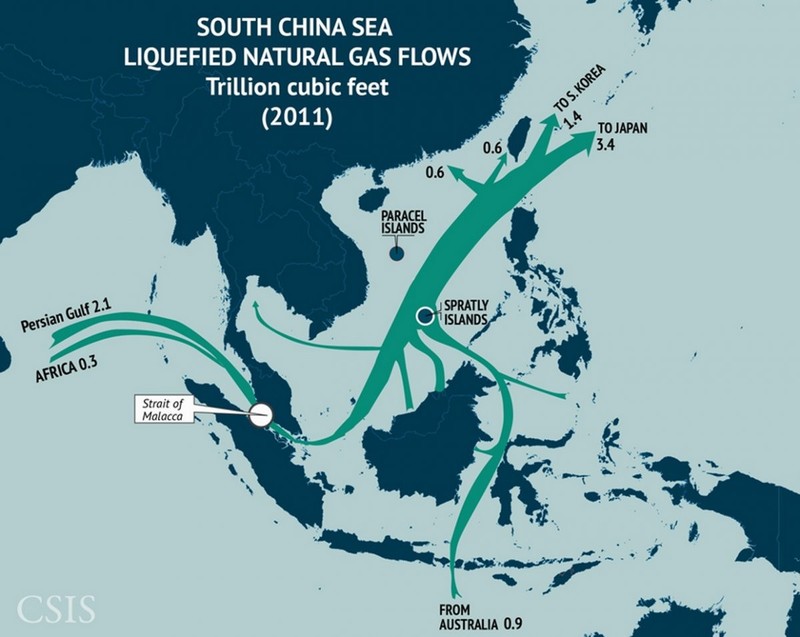
LNG flows, one of the many reasons
why the South China Sea is widely
considered to be strategic
|
Manila’s legal bid to cut short China’s maritime expansion is part of a wider strategy involving rearmament (among others, purchasing FA-50 light fighters from South Korea)50 and closer defense links with the US and regional powers like Japan and Vietnam. In the case of relations with Washington, the impact of rising tensions in the South China Sea is twofold and seemingly to some extent contradictory. On the one hand, the Philippines and the United States have grown tighter, while on the other Manila has diversified and widened her alliances, no longer relying almost exclusively on Washington. Although this parallel reinforcement and diversification may not be without its contradictions in the future, for the time being it seems to be fitting reasonably well with the US dual Pacific policy of reengagement and increasing reliance on regional allies for military support. We could also note that the need to upgrade external defense and invest more in the air force and the navy may have provided Manila with an additional reason to be flexible in continuing the long and difficult path toward a peaceful settlement with Muslim rebels in the country’s south. While there are many other reasons to wish the peace process in Mindanao to conclude successfully, friction in the South China Sea is clearly one, and this has not been lost on regional allies like Japan, which retains a discrete but clear interest in developments in the island.
Similarly, Hanoi’s decision to join the international arbitration case should not be seen in isolation, but rather as part of a multi-faceted strategy which like Manila’s also involves rearming and developing closer ties to other countries, including Japan (which is providing patrol boats to her coastguard), India (a key partner in developing offshore oil and also a patrol boat supplier),51 Russia (essential weapons supplier and energy industry partner), and the United States (whose Pacific Fleet commander visited Vietnam in December 2014).52
Concerning bilateral relations between Vietnam and the Philippines, their respective territorial claims are to some extent overlapping, hence the two countries are not completely at one. However, there is some evidence for tighter links, not least of which the port visit in November 2014 by two Russian-built Vietnamese frigates to Manila, the country’s first ever.53 The 29-30 January 2015 trip to the Philippines by Viet Nam’s Deputy Prime Minister and Minister for Foreign Affairs Pham Binh Minh inaugurated “discussions towards the establishment of a Strategic Partnership and its elements with a view to elevating the level and intensity of bilateral exchanges between the two countries”. According to the Philippines’ Government, concerning the South China Sea, Minh and Secretary of Foreign Affairs Albert F. del Rosario “agreed that concerned Parties should adhere to the ASEAN-China Declaration of Conduct of Parties in the South China Sea (DOC) and soon conclude a Code of Conduct (COC)” and “reaffirmed their commitments to a peaceful resolution of disputes in the SCS in accordance with international law and the 1982 United Nations Convention on the Law of the Sea (UNCLOS)”.54 Commenting on this trip, Carl Thayer wrote that it was “likely that a formal strategic partnership agreement could be reached this year”, adding that negotiations constitute “a determined diplomatic effort to shore up Vietnam’s relations with fellow members of the Association of Southeast Asian Nations (ASEAN)”, and underlining that “Growing Chinese assertiveness in the South China Sea in recent years has led to a growing convergence of strategic interests between Manila and Hanoi”. Concerning the meaning of the term “strategic partnership agreement”, he cautions that “Both sides, however, want to broaden cooperation in order to avoid the appearance that the strategic partnership is a military pact by another name”, adding that existing trade and investment links are weak.55 In more concrete terms, he mentions that “Vietnam could seek to leverage off the recently inaugurated U.S. Poseidon surveillance flights from the Philippines, for example”.56 As noted by Del Rosario, this would be the third such agreement for Manila, following similar deals with Tokyo and Washington.
There are many obstacles to meaningful cooperation between the Philippines and Vietnam, going beyond generic statements of support for the rule of law at sea. They include poor interoperability and a weak record of past military cooperation. However, there is a growing realization in both Hanoi and Manila that closer links may allow them to reinforce the credibility of their defense posture, and more widely, their diplomatic stance concerning the South China Sea. ASEAN may seem the perfect forum for this closer cooperation to take place at the political level, while better interoperability would demand the regular holding of drills and exchanges, bilaterally or within a wider framework probably including the United States and Japan. This regional cooperation could perhaps take the place of joint air patrols.57 In order to avoid being seen as squarely confronting China, such joint air patrols may focus on search and rescue, and environmental monitoring. The interoperability and joint operational experience gained, however, could then be applied to other scenarios.
Beijing puts forward its own views of the conflict
Post-Mao China has followed a somewhat contradictory approach to international law. To a large extent, this mirrors the country’s complex domestic relationship with the concept of the rule of law. On the one hand, China’s reopening of her law schools after the Cultural Revolution and huge expansion of the legal profession and the practical, day to day, presence of the law, has led to a similar move in the international arena. However, this greatly expanded role of the law both domestically and internationally has been accompanied, in the internal domain, by a persistent rejection of the concept of “rule of law”, authorities rather leaning towards “rule by law”. In Chinese foreign relations, international law has had to contend with two obstacles. First, there is a mistrust of international tribunals, and the fear that they may impinge on Chinese sovereignty. Moreover, the South China Sea has been defined as a “core national interest”58, although the exact meaning of this term may not be completely clear .59 Second, with the notion that public international law is a creature of the Western nations and thus inextricably linked to a historical period of foreign domination that only began to be reversed after the 1949 Communist victory.60 This applies particularly to the law of the sea, seen as unfairly constraining the legitimate aspirations of a nation that has grown increasingly dependent on maritime trade and which feels surrounded by a chain of islands in hostile hands.
Throughout the international arbitration saga, China has repeatedly proclaimed that it would not accept the court’s jurisdiction. However, China has finally deemed it necessary to issue a formal document stating her posture. Some see this as a simple restatement of China’s position, confirming that it will not take part in the proceedings. Others see it as a small victory for the Philippines and international arbitration, since China has not been able to stay completely aloof from the case. Regardless, it is usefull to examine the document,61 dated 7 December 2014, some of whose main points are summarized here, noting in brackets the paragraph quoted or commented on. A more detailed analysis of Beijing’s response can be found in Appendix I to this paper.
The paper opens making it clear that issuing it is not equivalent to taking part in the arbitral proceedings, and then lists (Paragraph 3) its main purposes, each covered in one section, numbered from II to V.
These goals are first of all (Section II, Paragraphs 4-29) to stress that the case concerns “the territorial sovereignty over several maritime features in the South China Sea”, which, contrary to Filipino assertions, “is beyond the scope of the Convention and does not concern the interpretation or application of the Convention”. Next (Section III, Paragraphs 30-56), to explain that “China and the Philippines have agreed, through bilateral instruments and the Declaration on the Conduct of Parties in the South China Sea, to settle their relevant disputes through negotiations” and the arbitration proceedings are thus a breach by Manila of “its obligation under international law”. Third (Section IV, Paragraphs 57-75), “assuming, arguendo, that the subject-matter of the arbitration” was interpreting or applying UNCLOS, the paper argues that it would still be “an integral part of maritime delimitation” thus falling squarely within China’s derogation from compulsory arbitration. Fourth (Section V, Paragraphs 76-85), the text underlines that, in Beijing’s view, “the Arbitral Tribunal manifestly has no jurisdiction over the present arbitration” and defends the view that China’s refusal to take part in the proceedings stands “on solid ground in international law”.
In Section II, the document (5) sums up the different Filipino constitutional and legal provisions defining her national territory, including references to “all the territory ceded to the United States by the Treaty of Paris concluded between the United States and Spain” in Article 1 of the 1935 Constitution. This is interesting because it implicitly contradicts Washington’s claim to take no sides in territorial disputes in the South China Sea, stressing only peaceful resolution in accordance with international law. The problem with this posture, in the case of the Philippines, is that, given that they were under American sovereignty, by saying it does not take any position on sovereignty the US is saying that it does not know the extent of its past territory. Therefore, we might ask what Beijing’s motivation in bringing up such treaties may be. At first glance it would seem better for China if the US sticks to this policy of not commenting on territorial claims themselves. On the other hand, however, Beijing may perhaps hope to prompt Washington to publicly comment on the matter in a way that may be detrimental to Manila, that is by stating that certain features claimed by the Philippines were not under US sovereignty in the past.
Taiwan and the “One-China Principle” are not absent from China’s document either, the text (22) accusing Manila of committing a “grave violation” of the principle for omitting Taiping Dao (Island) from the list of “maritime features” described as “occupied or controlled by China”. Instead, the text describes it as being “currently controlled by the Taiwan authorities of China”. A reminder that the conflict over the South China Sea is connected with that over Taiwan, in a number of ways. We may ask ourselves whether Manila was departing here from her “One-China Policy”. Was this a warning shot, or merely another example of how state practice concerning Taiwan is moving (sometimes inadvertently) away from Beijing’s strict position in many countries.62
Section 28 stresses that “China always respects the freedom of navigation and overflight enjoyed by all States in the South China Sea in accordance with international law”. While this is in line with repeated assertions by Chinese authorities, it prompts further doubts on the exact nature of Beijing’s claims, for if all China was demanding was an EEZ then freedom of navigation and overflight would simply flow from international law, without the need for any concession by the coastal state. The issue is made more complex by the fact that in Beijing’s view the rights of coastal states are more extensive than in the eyes of countries such as the United States, going as far as including the right to authorize or deny military activities such as electronic intelligence gathering, which has been the source of a number of incidents, some of them fatal. Thus, if what China is claiming is an EEZ, is Beijing making a concession and accepting a lesser set of coastal state rights in the particular case of the South China Sea? Alternatively, should we read “freedom of navigation and overflight” as being restricted to civilian ships and planes, or at least not including any activities such as ELINT (electronic intelligence) gathering that might be prejudicial to the coastal state? Other questions may be prompted by China’s assertion. For example, does this also apply to territorial waters around Chinese islands in the South China Sea? A question made more complex by the fact that there is no agreement over which islands are legally recognized as islands given the extensive reclamation work taking place.
In Section III Beijing provides a long list of bilateral agreements and statements, and ASEAN documents, stipulating commitments to settle disputes by negotiation and agreement, in order to prove Manila is therefore “debarred from unilaterally initiating compulsory arbitration”. With regard to the absence of an explicit exclusion of third-party settlement, which as pointed out the text acknowledges, China cites the “Southern Bluefin Tuna Case”,63 where the arbitration tribunal stated that “the absence of an express exclusion of any procedure … is not decisive”, that is the fact that a treaty commits parties to negotiate rather than resort to other, non-consensual, dispute settlement techniques prevents the latter from coming into play, without the need to specifically list all the possibilities. In that case, the applicable treaty required the parties to “consult among themselves with a view to having the dispute resolved by negotiation, inquiry, mediation, conciliation, arbitration, judicial settlement or other peaceful means of their own choice”, and the ICJ determined that “That express obligation equally imports, in the Tribunal’s view, that the intent of Article 16 is to remove proceedings under that Article from the reach of the compulsory procedures of section 2 of Part XV of UNCLOS, that is, to exclude the application to a specific dispute of any procedure of dispute resolution that is not accepted by all parties to the dispute.” For China, bilateral agreements and statements with the Philippines and the DOC are not separate realities, but (39) “mutually” reinforce “and form an agreement between China and the Philippines”, giving rise to “a mutual obligation to settle their relevant disputes through negotiations”. Beijing is very keen to insist not only that it prefers bilateral (as opposed to multilateral, or arbitration) dealings, but that Manila has agreed to this.
We can thus see how the document, despite stressing that it is not a formal reply, systematically rejects all of Manila’s arguments, while summarizing China’s position. While China emphasizes the Philippines’ alleged commitment to deal with the issue bilaterally, the text refers to treaties between the country’s former colonial masters, and touches upon the sensitive issue of Taiwan. It is a reminder of how difficult it is to keep things bilateral in this corner of the world.
US Interpretations of China’s 9-Dash Line
Despite repeatedly stating that it will not take sides in territorial disputes in East Asia, Washington remains keenly interested in the ultimate fate of the South China Sea. In addition to perennial calls to settle disputes peacefully, regular reminders of the importance of freedom of navigation, military aid to regional actors like the Philippines, and support for a more active policy by non-littoral maritime democracies like India and Japan, the US Department of State took a further step late last year by issuing a document64, part of its “Limits in the Seas” series. The text seeks to explain the different ways in which one may interpret Chinese maritime claims in the South China Sea (“that the dashes are (1) lines within which China claims sovereignty over the islands, along with the maritime zones those islands would generate under the LOS Convention; (2) national boundary lines; or (3) the limits of so-called historic maritime claims of varying types”). It concludes that the “dashed-line claim does not accord with the international law of the sea” unless “China clarifies that” it “reflects only a claim to islands within that line and any maritime zones”. The text explains that it includes supporting Chinese official views, without attributing “to China the views of analysis of non-government sources, such as legal or other Chinese academics”.65 Concerning this latter restriction, although it is of course official sources which may be considered to be most authoritative when it comes to interpreting a government’s position, we should not forget that administrations in different countries will often resort to “two-track diplomacy” or employ semi or non-official back channels to test the waters and lay the groundwork for future formal negotiations.

Nine-dash map attached to
China’s two 2009 Notes Verbales
|
We should note that the American policy of not taking sides concerning the ultimate issue of sovereignty could be challenged given Washington’s past sovereignty over the Philippine Archipelago. While this has not been publicly stressed by Manila to date, it could enter the debate as a means of putting more pressure on Washington to adopt a more robust posture.
The 7 December 2014 paper by the Department of Statebegins by stressing that “China has not clarified through legislation, proclamation, or other official statements the legal basis or nature of its claim associated with the dashed-line map”, explains the “origins and evolution” of the dashed-line maps, provides a summary of the different maritime zones recognized and regulated by UNCLOS, and then proceeds to explain and discuss three possible interpretations of that claim “and the extent to which those interpretations are consistent with the international law of the sea”.66 The document contains a number of maps, including (Map 1) that was referred to in China’s two May 2009 notes verbales to the UN Secretary General,67 which stated that “China has indisputable sovereignty over the islands in the South China Sea and the adjacent waters, and enjoys sovereign rights and jurisdiction over the relevant waters as well as the seabed and subsoil thereof . The above position is consistently held by the Chinese government, and is widely known by the international community”.68
The text first outlines the history of China’s maps of the South China Sea containing dashed lines, starting with a 1947 map published by the Nationalist government, noting that later PRC maps “appear to follow the old maps”69with two significant changes: the removal of two dashes inside the Gulf of Tonkin (in an area partly delimited by Vietnam and the PRC in 2000) and the addition of a tenth dash to the East of Taiwan.70 These two changes can be interpreted in different ways, to some degree contradictory. On the one hand, the partial delimitation agreement with Vietnam could be seen as evidence of Chinese pragmatism and flexibility, and proof that it is possible for countries in the region to at least partly settle their disputes by diplomacy. On the other, explicitly encompassing Taiwan with an extra dash may be seen as a reinforcement of Chinese claims on the island not necessarily based on the will of her population. Alternatively, it could simply be a way to more comprehensively encompass the waters and features that Beijing (either directly or via Taipei) wishes to master.
The paper then examines successive Chinese maps from a cartographic perspective, stressing that “China has not published geographic coordinates specifying the location of the dashes. Therefore, all calculations in this study relating to the dashed line are approximate”. This same criticism has been made of the San Francisco Treaty.71This section of the paper stresses that “Nothing in this study is intended to take a definitive position regarding which features in the South China Sea are ‘islands’ under Article 121 of the LOS Convention or whether any such islands are ‘rocks’ under Article 121(3)”. This is in line with Washington’s refusal to take sides concerning the ultimate sovereignty disputes in the region. The text notes that the “dashes are located in relatively close proximity to the mainland coasts and coastal islands of the littoral States surrounding the South China Sea”, and explains that, for example, Dash 4 is 24 nm from Borneo’s coast, part of Malaysia. Generally speaking, “the dashes are generally closer to the surrounding coasts of neighboring States than they are to the closest islands within the South China Sea”, and as explained later this is significant when it comes to interpreting the possible meaning of China’s dashed line, since one of the principles of the Law of the Sea is that land dominates the sea, and thus maritime boundaries tend as a general rule to be equidistant. That is, maritime boundaries tend to be roughly half way between two shores belonging to different states. To hammer home this point, the study includes a set of six maps (Map 4) illustrating this. The report criticizes the technical quality of the PRC maps, saying that they are inconsistent, thus making it “complicated” to describe the dashed line, whose dashes are depicted in different maps “in varying sizes and locations”. Again, this is important in light of possible interpretations of Chinese claims, since this lack of consistency and quality not only obfuscates Chinese claims, introducing an additional measure of ambiguity, but also makes it more difficult to ascertain whether historical claims are being made and whether they are acceptable in light of international law. .72
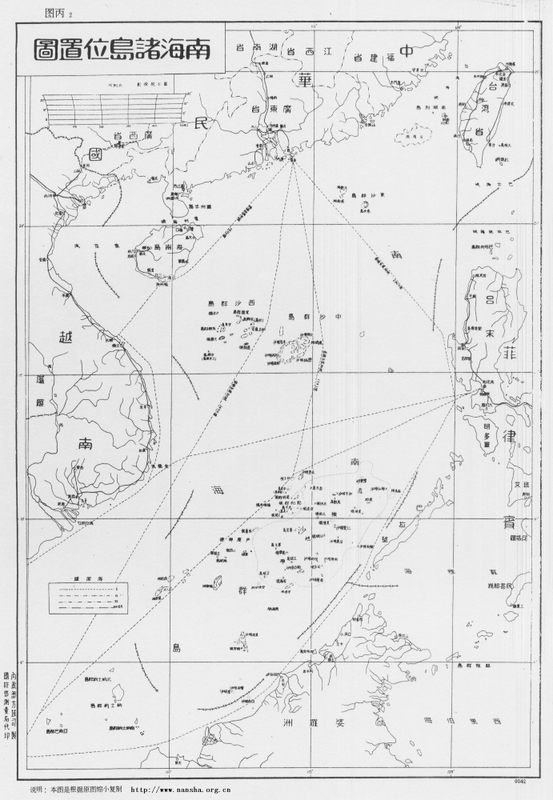
|

|
11-dash map of the South China Sea
issued by the KMT regime in 1947 |
South China Sea map first published in January
2013 by China’s state mapping authority Sinomap
Press, featuring 10 dashes instead of the previous nine |
Third, the page devoted to “’Historic’ Bays and Title”. The text stresses that “The burden of establishing the existence of a historic bay or historic title is on the claimant”, adding that the US position is that in order to do this the country in question must “demonstrate (1) open, notorious, and effective exercise of authority over the body of water in question; (2) continuous exercise of that authority; and (3) acquiescence by foreign States in the exercise of that authority”.74 The text explains that this traditional American perspective is in line with the International Court of Justice75 and “the 1962 study on the ‘Juridical Regime of Historic Waters, Including Historic Bays,’ commissioned by the Conference that adopted the 1958 Geneva Conventions on the law of the sea”.76 It then turns its attention to the regulation of historic claims in Articles 10 and 15 of UNCLOS,77 saying that they are “strictly limited geographically and substantively” and apply “only with respect to bays and similar near-shore coastal configurations, not in areas of EEZ, continental shelf, or high seas”.78 Just like, when examining China’s posture we must take into account, as discussed later, the country’s history, and in particular the Opium Wars and their aftermath, American history has also shaped Washington’s perceptions and principles. The Barbary Wars79 were widely seen as laying down fundamental principles of national policy such as rejection of blackmail, freedom of navigation, and the right and duty to intervene far from American shores whenever the country’s interests, principles, and prestige were at stake.80
Thus, while China’s position concerning the South China Sea may end up resting at least in part, on the concept of historic waters, even if this is not the case history and perceptions of history will surely still play an important role in determining Beijing’s policy. This, however, is not something only taking place within China, since no regional or extra-regional actor is immune to the phenomenon, adding to the already tense situation in South East Asia. In particular, a couple of centuries later, both the Barbary Wars and the Opium Wars remain powerful factors projecting their shadow on American and Chinese foreign and defense policy.
The paper’s second section basically consists of a summary explanation of “Maritime Zones”, “Maritime Boundaries”, and “’Historic’ Bays and Title” according to UNCLOS. Three aspects are of particular significance. First of all, that the interpretation provided is not necessarily that considered correct by China. Although this is not always squarely addressed, when discussing whether Chinese claims in the South China Sea are or are not in accordance with international law we should first define international law, and there is the possibility that as China returns to a position of preeminence she may interpret some of its key provisions in a different way. Second, as the paper itself notes, while China ratified UNCLOS in 1996, the United States has not, although she “considers the substantive provisions of the LOS Convention cited in this study to reflect customary international law, as do international courts and tribunals”. Not all voices take such a straightforward view of Washington’s failure to ratify the convention while claiming that it is mostly a restatement of customary law and therefore applicable anyway.73 Some critical observers see the United States as being, together with Japan, among the largest beneficiaries of UNCLOS, in addition to being the driving force behind it, even while refusing to ratify a convention from which China has gained almost nothing.
Let us move to the three interpretations put forward by the US Department of State.
1.- “Dashed Line as Claim to Islands”81
This would mean that all Beijing was claiming were the islands within the dashed lines, and that any resulting maritime spaces would be restricted to those recognized under UNCLOS and arising from Chinese sovereignty over these islands.
As possible evidence for this interpretation, the study cites some Chinese legislation, cartography, and statements. The former includes Article 2 of the 1992 territorial sea law, which claims a 12-nm territorial sea belt around the “Dongsha [Pratas] Islands, Xisha [Paracel] Islands, Nansha (Spratly) Islands and other islands that belong to the People’s Republic of China”.82 The Department of State also stresses that China’s 2011 Note Verbale states that “China’s Nansha Islands is fully entitled to Territorial Sea, Exclusive Economic Zone (EEZ), and Continental Shelf”,83 without laying down any other maritime claim. Concerning cartography, the study cites as an example the title of “the original 1930s dashed-line map, on which subsequent dashed-line maps were based”, which reads, “Map of the Chinese Islands in the South China Sea” (emphasis in the DOS study). With regard to Chinese statements, the study cites the country’s 1958 declaration on her territorial sea, which reads “and all other islands belonging to China which are separated from the mainland and its coastal islands by the high seas”84 (emphasis in the DOS study).
The text argues that this reference to “high seas” means that China could not be claiming the entirety of the South China Sea, since should that have been the case there would have been no international waters between the Chinese mainland and her different islands in the region. This is a conclusion with which it is difficult to disagree, although we should not forget that it was 1958, with China having barely more than a coastal force rather than the present growing navy. Therefore, while the study’s conclusion seems correct, and precedent is indeed important in international law, it is also common to see countries change their stance as their relative power and capabilities evolve. Thus, if China had declared the whole of the South China Sea to be her national territory in 1958 this would have amounted to little more than wishful thinking, given among others the soon to be expanded US naval presence in the region and extensive basing arrangements. Now, 50 years later, with China developing a blue water navy, and the regional balance of power having evolved despite the US retaining a significant presence, Beijing can harbor greater ambitions.85
2.- “Dashed Line as a National Boundary”86
This would mean that Beijing’s intention with the dashed line was to “indicate a national boundary between China and neighboring States”. As supporting evidence for this interpretation, the DOS report explains that “modern Chinese maps and atlases use a boundary symbol to depict the dashed line in the South China Sea”, adding that “the symbology on Chinese maps for land boundaries is the same as the symbology used for the dashes”. Map legends translate boundary symbols as “either ‘national boundary’ or ‘international boundary’ (国界, romanized as guojie)”. Chinese maps also employ “another boundary symbol, which is translated as ‘undefined’ national or international boundary (未定国界, weiding guojie)” but this is never employed for the dashed line.
The report stresses that, under international law, maritime boundaries must be laid down “by agreement (or judicial decision) between neighboring States”, unilateral determination not being acceptable. The text also notes that the “dashes also lack other important hallmarks of a maritime boundary, such as a published list of geographic coordinates and a continuous, unbroken line that separates the maritime space of two countries”. The latter is indeed a noteworthy point, since border lines would indeed seem to need to be continuous by their very nature, rather than just be made up of a number of dashes. This is one of the aspects making it difficult to fit Beijing’s claims with existing categories in the law of the sea. Moving beyond the law, however, and this is something that the DOS report does not address, a certain degree of ambiguity may be seen as beneficial by a state seeking to gradually secure a given maritime territory. Some voices have noted this may have been the US calculus in the San Francisco Treaty. Thus, the technical faults, from an international legal perspective, in China’s dotted line are not necessarily an obstacle to Beijing’s claims, from a practical perspective.
3.- “Dashed Line as a Historic Claim”87
The third way to see the dashed-line, according to the Limits in the Seas series paper, would be as a historic claim.
Concerning evidence for the possible interpretation of Beijing’s claims as historic, the report cites as “most notable” China’s “1998 EEZ and continental shelf law88, which states without further elaboration that ‘[t]he provisions of this Act shall not affect the historical rights of the People’s Republic of China’” (emphasis added in the DOS report). China’s 2011 Note Verbale89 says that Beijing’s claims are supported by “historical and legal evidence”, but while the DOS report adds emphasis to “historical”, one should be careful not to confuse a historical claim with a claim supported by history. A country may put forward historical evidence in both negotiations and arbitration or adjudication in areas where UNCLOS refers to “equitable” solutions. The text also notes how many “Chinese institutions and commentators have considered that the dashed-line maps depict China’s historic title or historic rights”.
The DOS reports explains that “some” Chinese Government actions and statements which are “inconsistent with” UNCLOS, while not amounting to “express assertions of a historic claim, they may indicate that China considers that it has an alternative basis – such as historic title or historic rights – for its maritime claims in the South China Sea”, and provides some examples, such as the assertion by a MFA spokesperson that the Second Thomas Shoal (Ren’ai Reef) is under Chinese “sovereignty”.90 This mantra about sovereignty, together with repeated appeals to history, could indeed be considered as evidence that what Beijing has in mind is a historic claim. Furthermore, it may well be a claim going beyond the provisions for such term in UNCLOS.
Next the DOS report examines two issues: whether China has actually “Made a Historic Claim”, and whether it would “have Validity”. Concerning the former, the text states that “China has not actually made a cognizable claim to either ‘historic waters’ or ‘historic rights’”, the reasons being a lack of “international notoriety” and the statement in her 1958 Territorial Sea Declaration that “high seas” separate the Chinese mainland and coastal islands from “all other islands belonging to China”. The text admits that the expression “historic waters” appears in some Chinese legislation and statements, and actually cites some of them, but believes that this does not amount to “notoriety” to a degree sufficient to “at the very least” allow “other states” to “have the opportunity to deny any acquiescence with the claim by protest etc.”91 since “no Chinese law, declaration, proclamation, or other official statement” exists “describing and putting the international community on notice of a historic claim”.
Whereas the assertion that China has not actually made a claim may not be shared by everybody, in particular given the language flowing from Beijing which the DOS report itself cites, the reference to the “high seas” between mainland China and some islands seems stronger proof that Beijing was not making a historic claim. However, we must again stress that this would be the case if we followed the prevailing interpretation of the law of the sea, but there is no reason why China should adhere strictly to it, and even less that Beijing should not have changed her mind since 1958, when she had little more than a coastal navy and her economy was closed and in tatters. It may be true, as the report notes, that the 1958 Declaration only made a historic claim to the Bohai (Po-hai) gulf in northeastern China, but again this should perhaps be judged from a wider historical perspective. After 1949 the PRC took a much more uncompromising stance concerning its North-East than its South-East (and wider maritime) borders. With a pragmatic arrangement in place with the United Kingdom concerning Hong Kong, and a strong economic and political relation with the Soviet Union, it was at the other end of the country where, in 1950, Beijing (not without an intense internal debate given the state of the country), decided to resort to force to prevent the presence of hostile forces close to her border, intervening in the Korean War, pushing back the advancing Allied forces and reversing the impact of the Inchon landing, ultimately forcing a stalemate on the ground. In 1958, just five years after the Korean armistice, nearby waters may have thus been much more present in Chinese leaders’ minds. In addition, these were also the waters directly leading to Tianjin and Beijing, the venue for foreign interventions in both the Opium Wars and the Taiping Rebellion. It would not be until the late 1970s that China’s South-Eastern flank would begin to receive more attention, in part thanks to the rapprochement with the United States and in particular once economic growth and the country’s move to become a net energy and commodity importer turned the waters of the South China Sea into a vital venue and potential choke point. It is true that in December 1941 the loss of HMS Prince of Wales and HMS Repulse in the South China Sea had enabled the Japanese to land in Malaya and ultimately conquer Burma, closing the last land route to besieged Nationalist China, but this did not result in a comparable imprint on China’s historical consciousness, among other reasons because the episode did not involve Chinese naval forces and was subsumed into a much larger, dramatic, and quickly-developing picture.
Concerning whether, if China “Made a Historic Claim”, it would “have Validity”, the DOS paper insists that “such a claim would be contrary to international law.” The text does not stop at arguing that it is not open to a state to make historic claims based not on UNCLOS but on general international law, laying down a second line of defense. It explains that, “even assuming that a Chinese historic claim in the South China Sea were governed by ‘general international law’ rather than the Convention”, it would still be invalid since it would not meet the necessary requirements under general international law, namely “open, notorious, and effective exercise of authority over the South China Sea”, plus “continuous exercise of authority” in those waters and “acquiescence by foreign States” in such exercise of authority. Furthermore, it explains that the United States, which “is active in protesting historic claims around the world that it deems excessive”, has not protested “the dashed line on these grounds, because it does not believe that such a claim has been made by China”, with Washington choosing instead to request a clarification of the claim. Whether this view is also meant to avoid a frontal clash with Beijing, in line with the often state policy goal of “managing” rather than “containing” China’s rise, is something not discussed in the text.

The Spratly Islands, a bone of contention
between China and the Philippines
|
Two Further Aspects to the US Position
The Department of State’s paper emphasizes that “The United States has repeatedly reaffirmed that it takes no position as to which country has sovereignty over the land features of the South China Sea”92
The trouble with this view, apart from the possibility that a measure of ambiguity in the San Francisco Treaty may be in Washington’s interest, is that the United States is no mere external power in the South China Sea, given two essential historical facts that the Department of State’s paper never mentions. The first is the period of US sovereignty over the Philippines following the Spanish-American War of 1892, and the resulting Treaties of Paris93and Washington,94 which among others determined the territorial extent of the Archipelago. The second is the Second Indochina War, more often known as the Vietnam War, when American forces together with those from other Allied nations operated in the region in support of the Republic of Vietnam.
The Treaties of Paris and Washington are important because they amount to the United States being, at least until Filipino independence, a littoral state in the South China Sea. Furthermore, the territory of the Republic of the Philippines is inherited from the United States, precisely around the time when China, at that time the Republic of China, is beginning to publicly assert its claims in the South China Sea. While this paper will not examine this issue in depth, it seems clear that American authorities are in no position to simply claim that they have nothing to say on the ultimate issue of sovereignty, as if the Philippines had never been under US sovereignty and Washington had never signed any treaty dealing with the extent of its territory.
The Second Indochina War is not as significant, but it still means that for years US forces operated in some of the regions under dispute, following agreements with the Republic of Vietnam and other states in the region, including the Philippines. Although again not the purpose of this paper, any examination in depth of American policy concerning the territorial dispute over the South China Sea cannot ignore this episode. Instead, the diplomatic history of the period should be examined in the search for evidence of any event or document of legal significance.
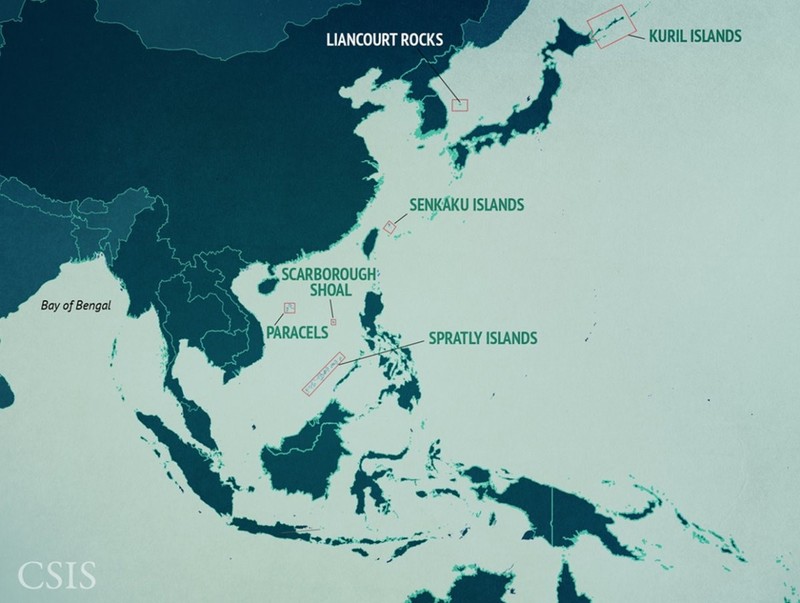
Map showing the location, within the
South China Sea, of the Paracels, the
Spratlys, and Scarborough Shoal
|
Russia: Just a Silent Observer?
A look at Russian policy towards the South China Sea may begin with the observation that, while all other regional and extra-regional actors seem to have growing geopolitical tensions with China, Moscow appears to be strengthening ties with Beijing at a time of increasing isolation and economic trouble, as in areas including energy, the Ukraine, and the Arctic. However, it is necessary to examine Russian national interests and actual decisions on the ground, while being aware that Russian sources are most reluctant to deviate from the official narrative of friendship with China. This reluctance was clear in last year’s new military doctrine, which did not contemplate a possible conflict with Beijing95 despite recognition of military imbalance in the Far East, one of the factors behind the Russian military reforms. Russian military doctrine may not refer to China, but “counter-terrorism” drills in the Far East usually feature the simulated employment of tactical nuclear weapons, hardly the first tool that comes to mind when confronting a terrorist attack. Although Chinese leaders avoid referring to it in public, a significant portion of Russia’s Far East remains an unfairly lost land in their eyes.96
Even before the current spike in tensions in the Euro-Atlantic Region, Russia had determined to diversify energy exports, increasing the share of oil and natural gas exports going to the Asia-Pacific. While agreements with China have attracted the most media and scholarly attention, Moscow has been working on a wide range of projects, including a possible natural gas pipeline to South Korea through the DPRK97 and civilian nuclear cooperation with Vietnam. Concerning Japan, Moscow was quick to offer support through increased LNG exports in the wake of Fukushima,98 and while observers differ on the realistic prospects of a grand bargain, some cautioning that relations with Russia are the most difficult dossier on Prime Minister Abe Shinzo’s table, a strong rationale remains for closer links between Russia and Japan.
This does not mean that this rationale will overcome bilateral obstacles such as the territorial conflict over the Northern Territories / Southern Kuriles and challenges associated with Japan’s difficulties in maneuvering away from American positions in the face of growing tensions with China, but it should at least caution against simplistic explanations. Furthermore, while Prime Minister Dmitry Medvedev’s latest visit to the Kurile Islands / Northern Territories in August 201599 again prompted criticism in Japan, this has not prevented Medvedev himself from signing into Russian law the extension of the country’s continental shelf into the Okhotsk Sea, as agreed with Japan and in line with Moscow’s February 2013 application to the UN Commission on continental shelves.100 Russia may have traditionally looked Westward, from Peter the Great101 to Lenin,102 but it is indeed a Pacific power, and its diplomacy features a wide range of relations with countries in the region. Faced with the need to develop her Far East, diversify away from Europe, avoid over reliance on China, and generally speaking maximize national power and influence and economic exchanges, we could perhaps talk about Russia’s own “Pivot” or “Rebalance” to the Pacific.103 According to Stephen Blank (Senior Fellow for Russia at the American Foreign Policy Council), “Justified emphasis on the current Ukraine crisis should not lead us to make the mistake of overlooking Russia’s policies in East Asia”. This author points out how Russia is using energy and weapons sales in the region, in line with Moscow’s traditional diplomatic practice, adding that “like other powers, Russia is pursuing what may be called a hedging strategy against China in Asia. On the one hand it supports China against the US and on the other works to constrain Chinese power in Asia”. Blank concludes that “Sino-Russian amity, at least in regard to the Asian regional security agenda, is something of a facade”, meaning that “Russo-Chinese ties may not be as dangerous for the US as some have feared, although there is no reason for complacency since the two governments will clearly collude to block numerous American initiatives globally”.104
Among other areas, Moscow may be seeking greater influence on the Korean Peninsula,105 the participation of Asian powers other than China in the Russian Arctic,106 greater cooperation with Indonesia, and, although regularly denied, the sale of Russian submarines (or transfer of technology) to Taiwan.107 One of the most striking aspects of the Russian presence in the Pacific, and in particular the South China Sea, is Moscow’s continued support for Hanoi and sale of advanced weapons, chief among them Kilo-class submarines. Russia is not just an essential lynchpin in Vietnam’s asymmetrical warfare strategy, it has avoided publicly supporting China’s stance in the region.
This failure to speak out in favor of Beijing is not restricted to the South China Sea, as noted by Mu Chunshan “Even on the Senkaku/Diaoyu dispute between China and Japan, Russia has kept an ambiguous position”. Mu lists four reasons for this. First, “China and Russia are not allies. There is no alliance treaty between them”, so Moscow is not bound to support Beijing politically or militarily, still less in “The South China Sea”, which “is not a place where Russia can expand its interests, nor is it necessary for Russia to interfere in this region absent a formal alliance with China”. Second, “Russia enjoys good relations with countries bordering the South China Sea and does not need to offend Southeast Asia for the sake of China”. This does not just apply to Vietnam, since for example “Russia also enjoys a good relationship with the Philippines”. Third, with Moscow focused on Europe and the Ukrainian crisis, “Russia has neither the desire nor the ability to confront the U.S. in the South China Sea”. Finally, “the development of China has actually caused some worries within Russia”, with concerns centered on possible encroachment in the Russian Far East. However, according to Mu Chunshan this does not mean that there is a split between Moscow and Beijing, since the two countries know each other well and Russia’s silence on the South China Sea, like China’s on the Crimea, does not mean they oppose each other. Beijing’s abstention at the UNSC on Crimea “doesn’t mean that China opposes Russia’s position. By the same logic, Russia’s neutral stance in the South China Sea disputes doesn’t mean that Russia doesn’t support China”. Generally speaking, “China and Russia leave each other ample room for ambiguous policies, which is actually proof of an increasingly deep partnership. This arrangement gives both China and Russia the maneuvering space they need to maximize their national interests”.108
Vietnam has not only recently received her third enhanced Kilo-class submarine, HQ 194 Hai Phong,109 but is building four Tarantul-class orMolniyacorvettes at Ba Son Shipyards, under license from Russia’s Almaz Central Design Bureau. Two corvettes were previously delivered in June 2014.110 Furthermore, Cam Ranh Bay remains of the utmost importance to the Russian Navy, and in November 2014 Hanoi and Moscow signed an agreement to facilitate the use of the base by Russian warships.111 According to this agreement, in future Russian warships will only have to notify port authorities immediately prior to their arrival, the agreement privileging the Russian Navy and giving it special access, whereas other navies are restricted to one port visit per year.112
Russia is also a nuclear energy partner for Hanoi, and has ignored Chinese injunctions to abandon offshore oil cooperation with Vietnam in the South China Sea.113 Speaking to the Vietnamese media in advance of his official trip in April this year, Russian Prime Minister Dmitry Medvedev confirmed plans for “a free trade area agreement. It will likely be the first such agreement to be signed between the Eurasian Economic Union and an individual country”, while identifying Vietnamese tourism in Russia and trade settlement in their respective national currencies as areas for further work.114 While defense links with Russia are a cornerstone of Vietnam’s multi-vector diplomacy, they go hand in hand with growing links with the United States. As often happens with countries engaging a wide range of powers which may otherwise be at odds, such a balancing act is not always easy and may result in pressure by one partner to restrict cooperation with the other. Recently, use of Cam Ranh Bay air facilities by Russian Il-78 Midas tanker planes refueling Tu-95 “Bear” strategic bombers, involved among others in sorties to Guam, prompted a request by Washington to Hanoi to terminate such access.115
We can conclude that Moscow is determined not to become too dependent on Beijing, and that despite many domestic and bilateral obstacles it wishes to become a major Pacific power. This may offer some opportunities to the United States in the event of a turn for the worse in Sino-American relations, but in addition to the many challenges it would pose, right now this appears an unlikely scenario given the deep mistrust of Russia in Western quarters in general and Washington in particular.116 Together with the absence of any mention of sanctions when discussing policy options in the South China Sea, and the apparent disconnect between the US “rebalance” and the country’s nuclear posture, this deep schism between Russia and the West constitutes a triad of factors objectively enhancing China’s position when dealing with her neighbors. Unlike Moscow, Beijing seems to be succeeding in preventing a regional territorial conflict from having a major impact on bilateral relations with Washington.
India: Looking East
As a quasi-island, vitally dependent on sea lanes of communication, India cannot afford to ignore developments in the South China Sea, a body of water connecting the country to, among others, Japan. In recent years New Delhi has supported Hanoi in two crucial ways, first by cooperating in offshore oil exploration and production, and second in helping build the country’s maritime security capabilities. This may be seen as part of New Delhi’s “Look East” policy,117 and also as partially motivated by a desire to make it more difficult for China to dominate the South China Sea and thus more easily access the Indian Ocean and increase pressure on India. However, while this may make sense, and fit with other Indian policies such as improving border infrastructures118 in the Himalayas and developing key weapons systems such as Brahmos,119 it does not mean that it is necessarily part of any “grand design” to encircle China. While true that India has gradually developed a wide range of relations with other countries in the region, including joint military drills, the often grand-sounding words employed to describe them rarely match their actual contents. For example, while relations with Japan are important and benefit from the personal warmth between the two prime ministers,120 New Delhi and Tokyo are yet to conclude a civil nuclear agreement, which would certify the end to India’s “nuclear apartheid”. New Delhi remains cautious concerning China, and rather than engage in a multinational alliance against Beijing, Brahma Chellaney has more accurately described the country as having moved “from nonaligned to multialigned”121 under a prime minister whose foreign policy “hallmark” is “pragmatism”.122
Furthermore, suspicions of the United States and more widely of foreign entanglements remain high among India’s national security community. Three recent tweets by Saurav Jha, a commentator on energy and geopolitics, are indicative in this regard. On 24 January 2015 he wrote “All the ‘pivot’ posturing has already served its purpose. All this Asian NATO talk is only for those who want to import expensive platforms” and “As usual Indian analysts missed the significance of the Obama-Jinping maryland retreat when they agreed on Yuan-dollar dynamics.”, adding “America has no desire to fight China and even overtly they keep saying that they do not seek to contain China or build alliances against it”.123
While the January 2015 trip to India by US President Obama was widely considered to have been successful, with Dhruva Jaishankar (a fellow with the German Marshall Fund) concluding that “Anti-Americanism is dead”,124 still more than a few Indian voices are reluctant to enter into any set of alliances that may led to entanglements or see the country used as a pawn against China. Thus, while Jaishankar explained that “Modi has been unabashed about deepening partnerships with countries in the Indo-Pacific region with which India shares both interests and values, particularly Japan and Australia”, seeking to “manage China’s rise by diversifying regional security partnerships” and establishing a “closer relationship with the US”,125 Manimugdha Sharma, a journalist specializing in military history, tweeted “For decades, US propped up Pakistan to offset and upset its bigger neighbour. Let’s hope we don’t become Pak in US’ scheme against China”,126adding that “India, so far, has very wisely stayed away from grand coalitions and alliances. Even in the aftermath of 9/11, when there was pressure on India to join the war against terror, we very wisely avoided sending troops. So logically speaking, India would avoid being used … we must set boundaries on this new friendship with the Americans”.127
The “Joint Strategic Vision for the Asia-Pacific & Indian Ocean Region” released on the occasion of Obama’s visit referred to the South China Sea. “Regional prosperity depends on security. We affirm the importance of safeguarding maritime security and ensuring freedom of navigation and over flight throughout the region, especially in the South China Sea”. It called on “all parties to avoid the threat or use of force and pursue resolution of territorial and maritime disputes through all peaceful means, in accordance with universally recognized principles of international law, including the United Nations Convention on the Law of the Sea”.128
Furthermore, the trip was accompanied by renewed commentary about “quadrilateral” (Australia-India-Japan-US) maritime cooperation, following Modi’s words to that effect,129 with commentators such as David Lang (analyst at ASPI and an editor of The Strategist) stressing that India’s Modi and Japan’s Abe are both “nationalistic, conservative leaders … elected with mandates to restart their economies and reclaim lost pride” and “playing for a greater role in underwriting peace and stability in the Asia–Pacific” and therefore seeking to “engage more with the US, regional partners and multilateral security architectures”.130
However, as noted above, wariness of entanglements and loss of “strategic autonomy” still runs high in New Delhi and while democracies in the Pacific generally agree on the need to at least “manage” the rise of China and defend the rule of law at sea, this coexists side by side with a desire not to provoke China, and a degree of mistrust concerning the real degree of commitment by other parties to any collective endeavor to prevent Chinese territorial expansion. It is a dilemma well known by experts in game theory. Saurav Jha pulled no punches in this regard, tweeting “Does anybody seriously think that Indian participation in maritime coalition action against China will not lead to a Sino-Pak land attack?” and wondering “Will Japan open an Eastern front, during an Indian war with China. If not, what the hell is all this quadrilateral pappi-jhappi about?” This led him to express the view that “Unless India and Japan agree to a formal nuclear alliance, I really do not see the point of all this bakwaas quadrilateral pappi-jhappi”.131
Concerning India-Philippines relations, while Manila has pointed out that New Delhi welcomed her arbitration bid, India has done so cautiously,132 and bilateral exchanges remain relatively low key, while unimpeded by any significant dispute.133
Therefore, while we can expect India to keep supporting Hanoi in the latter’s quest to develop offshore oil and build up her coastguard, it is likely that India will keep her options open and retain a prudent policy towards China, in a bid to prevent the latter’s expansion while avoiding provocations. While both sides see tighter India-Japan relations as necessary, when envisioning an open South China Sea, they recognize that overlapping values and interests are not enough to guarantee real progress, although the political will is clearly there and there is a widespread perception that India’s role in the region will grow.
Reclamation: Changing Facts on the Ground?
Another important development during the year 2014 has been reclamation work on different islands and reefs in the South China Sea, mostly although not solely by China, which some sources point out is also conducting similar activities in the Nanji Islands, located in the East China Sea, 300 km from the Senkaku/Diaoyu/Diaoyutai Islands.134
The construction of artificial islands and the expansion, through reclamation, of existing natural features, is important on at least two counts. From a legal perspective, by supporting Chinese claims that certain features are indeed islands, benefits may include classification as an EEZ and not just a territorial sea and contiguous zone. While UNCLOS stipulates that in order for an island to result in an EEZ it must not constitute “rocks which cannot sustain human habitation or economic life of their own”, the distinction between islands giving rise to the different maritime zones regulated by UNCLOS and such “rocks” is, in the words of a leading law of the sea textbook, “poorly drafted” since, among others, “it does not define what a ‘rock’ is or suggest any dividing line between ‘rocks’ and islands. In addition, the question of whether any particular ‘rock’ can sustain ‘human habitation’ or ‘economic life’ is one that may admit of more than one answer because of the vagueness of the phrases used”.135
To complicate the matter further, the issue of artificial islands is also ambiguous in UNCLOS. According to the same textbook, “The definition in the Conventions of an island as being ‘naturally-formed’ excludes artificial islands, although the distinction between a ‘naturally-formed’ and an ‘artificial’ island may not always be easy to make in practice: for example, if a State constructs some kind of barrier in the sea so that sand being moved by currents piles up against it, with the result that eventually an island is formed, is this a ‘naturally-formed’ or an artificial island?”136 Thus, while UNCLOS states that artificial islands or installations on the high seas does not give rise to a maritime zone,137 the ambiguity over what is natural and what is artificial provides a powerful incentive for claimants to consolidate and expand existing features, and even build new ones. The second reason why reclamation is important is that it may support a denser defensive network, facilitating the conversion of the South China Sea into what some Indian and Japanese voices call “Lake Beijing”.138 According to Harry J. Kazianis, “China continues to change facts on the ground (‘in the water’ might be a better term), continuing work on several massive island reclamation projects that many analysts feel will create much larger islands housing airfields, ports, radar stations and maybe even anti-ship missile batteries”, adding that “New South China Bases + A2/AD = A Nightmare for America and Its Allies”. A2/AD stands for “Anti-Access/Area Denial”, the Center for Strategic and Budgetary Assessments (CSBA) defines “anti-access as enemy actions which inhibit military movement into a theater of operations, and area-denial operations as activities that seek to deny freedom of action within areas under the enemy’s control”.139 Kazianis stresses that “Dubbed A2/AD by most Western military specialists, the PRC is slowly creating the conditions in which U.S., Japanese or other allied forces would suffer heavy losses if a conflict ever occurred in the [area] out to the first island chain, and in the future, all the way to the second island chain.”.140
The Falklands were already a warning shot of what shore-launched anti-ship cruise missiles can accomplish, and whereas Argentina only managed to deploy an improvised Exocet unit employing missiles taken from a damaged warship, technological progress over the last three decades and lessons learned from that and other conflicts mean that such weapons have become a pillar of island warfare in the minds of defense planners in the Indian-Pacific Ocean Region, not least of which the Japanese. 141 This lesson from the South Atlantic may be one of the factors prompting reclamation work on the South China Sea.
During his 29-30 January 2015 trip to the Philippines, Viet Nam’s Deputy Prime Minister and Minister for Foreign Affairs Pham Binh Minh and Philippines’ Secretary of Foreign Affairs Albert F. del Rosario “expressed their serious concern over the ongoing massive reclamation activities that pose threats to the peace and stability in the region as well as to the lives of many people across the various coastal states in the SCS”.142 Similar concerns have been expressed by others, while some observers have defended Chinese actions as compatible with international law.
For example in November last year National Taiwan University Law Professor Chiang Huang-chih (姜皇池), argued in an article in the Taipei-based United Daily News that “if you look at international norms, it is hard to find any legal grounds to demand that the PRC immediately stop its land reclamation activities”, stressing that “no specific stipulations in international law forcibly restrict claimants from engaging in construction projects on the reefs effectively under their control”. Chiang noted that countries involved in other disputed islands had undertaken development work, citing the cases of Dokdo/Takeshima where “South Korea sent people to build a lighthouse and reside on the islands” and “the northern four islands” where “Russians built facilities”.143 s.
In his article, Chiang stresses the importance of “effective occupation” over disputed islands and the doctrine of “uti possidetis” (“先佔原則”in Chinese) in international law, including previous decisions by the ICJ. He explains that this means that “those who occupy ‘terra nullius’(無主地have the right to develop the land”, concluding that “The doctrine of ‘uti possidetis’ seems to be the prevalent idea in international community even in determining the sovereignty over unoccupied land, albeit it is controversial”.144
It is clear that uti possidetis is a basic principle of international law, but it refers to the preservation of existing administrative borders in decolonization processes “thus theoretically excluding any gaps in sovereignty which might precipitate hostilities and encourage foreign intervention”. With origins in South America, it was later stressed by African states, and was followed when the Soviet Union disintegrated and Yugoslavia dissolved.145 Uti possidetis remains the norm in other self-determination processes, but referring to it in the context of land reclamation may perhaps be a bit forced, or at least not directly relevant, except as illustration of a general concern for stability in international law. e Concerning the importance of “effective occupation”, Chiang is clearly right to point it out, since in practice any claimant having actual physical possession of disputed ground or waters will be in a much stronger position, both from a political and military perspective, and even from a purely legal one. Actual control allows a state, among others, to build a history of exercise of sovereign powers, pile up precedents of acquiescence by other countries, change the physical characteristics and supporting infrastructure of the contested feature, and better control the tempo and direction of diplomatic negotiations and other forms of dispute settlement. The saying “possession is nine tenths of the law” comes to mind. More generally, as stressed by Antony Allott in his work on “The Limits of Law”, “general or widespread resistance to or disregard of a law produces in practice the repeal of that law, de facto or de jure”.146
It would of course be unfair and misleading to single out China alone when it comes to reclamation and infrastructure building, as mentioned, or to imply that it is only in the South China Sea where this is taking place. As a general rule, a country with a disputed maritime territory will seek to ensure that it accommodates as much economic, scientific, and administrative activity as possible. An example, not in the South China Sea is the Senkaku/Diaoyu/Diaoyutai Islands. For decades, Japan chose not to develop the islands, which remained in private hands, until in 2012 it moved to nationalize the islands, in a move aimed in part at preempting their purchase by the Tokyo Metropolitan Government.147
Beijing and many Chinese interpreted this as dangerously escalating the dispute over possession of the islands. While Tokyo has not deployed permanent ground troops in the Senkaku Islands,148 there have been private proposals to build infrastructure, and even some unauthorized moves, such as the construction of a lighthouse by an activist organization in 1978,149 and another in 1996. However, on the latter occasion, Tokyo tried to distance herself from the action, with Minister of Foreign Affairs Ikeda Yukihiko saying “The construction of a lighthouse in the Senkakus does not reflect the intention or views of the Government of Japan. The Government of Japan has decided to suspend decision on the permission of the lighthouse. The issue concerning the lighthouse does not affect Japan’s territorial rights. That is, the basis for Japan’s territorial rights to the Senkaku Islands is in no way strengthened or weakened by the issue concerning the lighthouse”.150
Tokyo subsequently insisted that no private citizens or organizations could build lighthouses in the Senkakus.151 On the other hand, Japan has worked hard to alter a natural feature in Okinotori and Minamitori. Okinotori Island is a coral reef, located more than 1,000 miles south of Tokyo, whose value lies in giving Japan a huge EEZ around it. However, Beijing considers it to be a rock, thereby not giving rise to such an EEZ, according to UNCLOS, and hence Japan’s efforts to ensure that it does not sink. Since the 1980s, Japanese authorities have used concrete and sand to cover the area with a rust-proof titanium net. In addition, to stressing its island status, Japan has built a weather observation station on Okinotori, with a range of additional plans considered, including a prison and the breeding of micro-organisms. Minamitori is also a reef, and Japan’s easternmost island, with Tokyo similarly attempting to protect its shores.152
Concerning Russia, like Japan a non-littoral state with interests in the South China Sea153 and a nation which is involved in other maritime territorial disputes, Moscow has also been working to develop infrastructure in the Northern Territories / Southern Kurile Islands. Two differences are first, although not leading to an agreement to date, dialogue and some degree of cooperation with Tokyo have taken place, and second, that the islands themselves are more than big enough to sustain both economic activities and a military presence, they have long been inhabited, and Russia has not deemed it necessary to engage in reclamation. Limited cooperation includes an understanding on Russia’s continental shelf in the Sea of Okhotsk.154 In recent years, Moscow has worked to develop, or at least announced plans to do so, roads, fishing farms, and spas.155 In September 2014, an airport was inaugurated in Etorofu, one of the disputed islands.156 Japan has protested against these moves, seeing them as increasing the effective degree of Russian control over the islands. In addition to their symbolic value (seen by many Russians as a just reward for the country’s huge sacrifice in the Second World War), which should not be lightly dismissed, and their role in making the Sea of Okhotsk a safe haven for strategic submarines157 and facilitating easy access to the Pacific Ocean by the Navy, the islands are home to significant economic resources, with fisheries at the forefront,158 but also including, among others, gold. In a recent assessment of the conflict, James D. J. Brown is not only pessimistic about an agreement, but concludes that “there are strong grounds to believe that Russia is now moving inexorably towards the point at which it will no longer even consider relinquishing the two smaller islands”.159
While he does not mention Japan and Senkaku/Diaoyu/Diaoyutai, Chiang believes that “Censuring Mainland China for its land reclamation activities while turning a blind eye to the activities of other claimants would be a clear case of adopting double standards”.160 Concerning land reclamation by other coastal states, in October 2014 the Philippines called on claimants to suspended construction work on disputed islands and said it would be doing so. However, no other regional states followed suit, and in March 2015 Manila announced that it would be resuming limited upkeep work. Foreign Minister Albert del Rosario said “We are taking the position that we can proceed with the repair and maintenance”, adding that this would “include making repairs to an airstrip, which would not jeopardize their claims to the area or disrupt regional stability”.161 This same Filipino report noted how, over the last few months, “China has forged an impressive undertaking of reclamation”, proceeding with “astounding speed” to secure a “newly constructed man-made island among the Spratly Islands”.162
This was a reference to “an island at least 3,000 m long on Fiery Cross Reef that could be the site for its first airstrip in the Spratly Islands”, with “Satellite imagery of the island taken on 8 August and 14 November” 2014 showing that in three months “Chinese dredgers have created a land mass that is almost the entire length of the reef”. Located to the west of the main Spratly island archipelago, Fiery Cross Reef “was previously under water; the only habitable area was a concrete platform built and maintained by China’s People’s Liberation Army Navy (PLAN)”.163 One of the lessons from the Falklands War is the need to be able to operate aircraft as close as possible to the disputed territory. In 1982 Argentina was unable to operate its Exocet-carrying Mirage from the Falklands themselves for lack of proper facilities, while British harriers were forced to launch from far away due to the overriding need to protect the Royal Navy’s only two light carriers. “Any power trying to operate air assets over disputed islands without having at its disposal air strips and other support facilities located on those same islands is likely to find itself facing these same constraints that both the British and the Argentines suffered from”.164 Sam Tangredi, author of the book Anti-Access Warfare: Countering A2/AD Strategies, 165 had noted before China undertook this reclamation work that, “An airbase on Fiery Cross Reef would give China de facto military control over the South China Sea airspace since it would allow shorter-range tactical aircraft with a heavier weapons load to operate in the airspace, an advantage over having to send tactical aircraft from the mainland in event of a potential conflict”.166 According to publicly available satellite imagery, the new island “is more than 3,000 m long and between 200 and 300 m wide: large enough to construct a runway and apron. The dredgers are also creating a harbour to the east of the reef that would appear to be large enough to receive tankers and major surface combatants”. This reclamation work is “the fourth such project undertaken by China in the Spratly Islands in the last 12-18 months and by far the largest in scope”.
Beijing has also built smaller new islands at Johnson South Reef, Cuateron Reef, and Gaven Reefs, but in these cases the resulting area is not big enough to accommodate an airstrip. China formerly lacked an island with an airfield, as opposed to Taiwan (Itu Aba/Taiping), the Philippines (Pagasa), Malaysia (Swallow Reef, whose airstrip was also built on reclaimed land), and Vietnam (Southwest Cay), now Beijing has achieved “parity”, in a move which, according to Jane’s James Harding and Sean O’Connor, “appears purpose-built to coerce other claimants into relinquishing their claims and possessions, or at least provide China with a much stronger negotiating position if talks over the dispute were ever held”.167 Greg Poling (analyst at Center for Strategic and International Studies) argues that “At this point, Beijing is building on almost every rock and low-tide elevation it occupies; to do any more would require pushing another claimant off a feature or occupying an unoccupied feature”, something that he does not believe Beijing is ready to do at this stage, while noting that there is not much Hanoi and Manila can do, the latter seeing her options even further restricted by the need to retain the “legal high ground as their arbitration case moves forward”.168 Gavin Greenwood (analyst with Hong Kong-based regional security firm Allan & Associates) says that “From Beijing’s perspective once the cement on an airstrip or fortification set atop a reef has hardened China’s claim has become a reality and the new land is as sovereign as Tiananmen Square and just as non-negotiable”. Greenwood considers the US Navy response to be weak in the face of China’s deployment of advanced destroyers “that will serve as a credible deterrence”.169
The potential impact of China’s reclamation activities has not gone unnoticed in Washington, with Adm. Harry B. Harris Jr., commander of the U.S. Pacific Fleet, warning that Beijing was building a “Great Wall of sand”. Speaking at a naval conference in Australia in March this year, Harris told his audience that China had created 1.5 square miles of artificial landmass over the last few months, adding that this was “unprecedented”.170 His words came on the back of the earlier misgivings expressed by State Department Spokeswoman Jen Psaki, who said that Chinese reclamation work added to “concerns they may militarize outposts on disputed land features in the South China Sea”.171
The legislative branch has also expressed concerns, with a number of legislative initiatives designed to reinforce the “Pivot” and avoid strategic distraction prompted by other ongoing conflicts in different parts of the world.172 In addition, Republican Senators John McCain and Bob Corker and Democrats Jack Reed and Bob Menendez sent a letter to US Secretary of State John Kerry and US Secretary of Defense Ash Carter cautioning that unless a comprehensive strategy was put in place, “long-standing interests of the United States, as well as our allies and partners, stand at considerable risk”. The missive173 explains that Gaven Reef had grown to about 28 acres (114,000-square-metres) over the past year, while formerly submerged Johnson Reef is now a 25-acre (100,000-square-metres) island and Fiery Cross reef has seen its size increase more than elevenfold since August 2014. This gives China the potential to expand the reach of its military, amounting to “a direct challenge, not only to the interests of the United States and the region, but to the entire international community”. These lawmakers demand that an American strategy contain “specific actions the United States can take to slow down or stop China’s reclamation activities”.174
China of course takes a different view of reclamation and construction work in the areas under its control. At a news conference on 8 March 2015, Chinese Foreign Minister Wang Yi said that Beijing was just carrying out “necessary construction on its own islands and reefs”. While repeating the Chinese mantra on freedom of navigation and insisting on Beijing’s desire to solve disputes through “direct dialogue”, he warned that “We do not accept criticism from others when we are merely building facilities in our own yard. We have every right to do things that are lawful and justified”.175 In less nuanced words, an opinion piece published by Xinhua accused Washington of displaying a “perverted sense of insecurity” and a “pirate-style mind-set” in criticizing Chinese reclamation work, demanding that she “honor its neutral commitment, abandon its warped mentality, retract its meddling hand”.176
A number of observers have sought to connect ongoing reclamation work with the possibility that Beijing may declare an ADIZ (Air Defense Identification Zone) in the South China Sea, a scenario already widely discussed when China established one in the East China Sea.177 The letter by four US senators to the secretaries of state and defense also refers to this.178
Conclusions
To conclude, while the ultimate fate of the arbitration remains unknown, the court having to decide first of all whether it has jurisdiction, Manila has achieved two goals. First, it forced Beijing to publish a position paper. While not amounting to taking part in the proceedings, it means that China has concluded that it cannot simply ignore them. Second, it has prompted Vietnam to address the court, although again without taking part in the proceedings. A third success for the Philippines is the publication of the US Department of State’s paper. However relevant these legal developments may be, the situation on the ground has been moving in favor of China, first and foremost thanks to extensive reclamation work that may both bolster its legal claims and make possible construction of bases to provide enhanced air and naval power.
This could be a reason why, while pushing for international arbitration, Manila has also been rearming, deepening its Alliance with the United States and expanding a widening range of defense relations with other coastal and non-coastal actors. Concerning the latter, India and Japan are vitally dependent on these waters and seem determined to play a growing regional role, while Russia continues to supporting Vietnam and quietly balance against a rising China that, official protestations to the contrary, may cast a shadow over its national security and geopolitical position. For the time being, while the Permanent Court of Arbitration continues deliberation on the admissibility of Manila’s arbitration bid, there will likely be continued incidents, clashing narratives, further reclamation work, rearmament, and a complex and kaleidoscopic set of quasi-alliances and extensive and often conflicting interests. An additional development could be, according to some observers, a Chinese ADIZ. US Naval War College Professor James Kraska believes that “#ADIZ will come; just a matter of time”.179 Whatever the ultimate fate of the South China Sea, its impact will reach far from its shores, both in terms of the international law of the sea, and the balance of power in the Asia-Pacific and beyond.
Appendix I: China’s position paper
After an introduction, making it clear that issuing the paper does not amount to taking part in the arbitral proceedings, the text lists in Paragraph 3 the main purposes of the paper, each such purpose covered in sections II to V. These goals are first of all (Section II, Paragraphs 4-29) to stress that the case concerns “the territorial sovereignty over several maritime features in the South China Sea”, which, contrary to Filipino assertions, “is beyond the scope of the Convention and does not concern the interpretation or application of the Convention”. Section III, Paragraphs 30-56 explains that “China and the Philippines have agreed, through bilateral instruments and the Declaration on the Conduct of Parties in the South China Sea, to settle their relevant disputes through negotiations” and that the arbitration proceedings are thus a breach by Manila of “its obligation under international law”. Section IV, Paragraphs 57-75 explains Beijing’s position that, “assuming, arguendo, that the subject-matter of the arbitration” was interpreting or applying UNCLOS, arguing that it would still be “an integral part of maritime delimitation” thus falling squarely within China’s derogation from compulsory arbitration. Section V, Paragraphs 76-85 underlines that “the Arbitral Tribunal manifestly has no jurisdiction over the present arbitration” and defends the view that China’s refusal to take part in the proceedings stands “on solid ground in international law”. These sections are followed by a set of Conclusions (Section VI, Paragraphs 86-93).
In Section II, the document (5) explains that “Prior to the 1970s, Philippine law had set clear limits for the territory of the Philippines, which did not involve any of China’s maritime features in the South China Sea”, citing Article 1 of the 1935 Constitution, which reads “The Philippines comprises all the territory ceded to the United States by the Treaty of Paris concluded between the United States and Spain on the tenth day of December, eighteen hundred and ninety-eight, whose limits are set forth in Article III of said treaty, together with all the islands embraced in the treaty concluded at Washington between the United States and Spain on the seventh day of November, nineteen hundred, and the treaty concluded between the United States and Great Britain on the second day of January, nineteen hundred and thirty, and all territory over which the present Government of the Philippine Islands exercises jurisdiction”.180 It added that the 1961 Philippine Republic Act No. 3046, titled “An Act to Define the Baselines of the Territorial Sea of the Philippines”,181 confirmed such territorial limits. Setting aside for a moment whether Manila has indeed redefined the limits to her national territory, this is potentially very significant because as reiterated in the US Department of State paper analyzed below, Washington has persistently stressed that it was taking no sides concerning the ultimate issue of sovereignty. Yet, while this may be sustainable in the case of other territorial disputes in the region, the case of the Philippines is rather different, given that the country was under US sovereignty for more than half a century. Thus, whatever one makes of Beijing’s case, it is difficult not to agree that past treaties signed by the United States may be relevant to the issue at hand.
A question may be what, if any, may be Beijing’s motivation in bringing up such treaties, in addition to providing arguments in favor of its posture concerning the extent of Filipino territorial claims. Is Beijing perhaps hoping to prompt Washington to publicly comment on the matter in a way that may be detrimental to Manila? Or to quietly lean on the Philippines not to go too far? These may be speculative questions, yet ones difficult to avoid given the complex nature of the South China Sea dispute, with not only different immediate players, that is the coastal states, but plenty of other interested contenders, including the United States, Japan, India, and Russia. China’s document also refers to a UK-US Treaty, and while London has traditionally chosen a low profile posture in the region, it has recently been upgrading defense cooperation with Japan. Going back to Washington, the possible impact of past treaties and other diplomatic practice has already been considered important by observers in the case of Taiwan and the Senkaku/Diaoyu/Diaoyutai Islands, given Formosa’s change of status following the end of the Second World War and the American occupation of the Ryukyu Archipelago for three decades after its conclusion. However, the connection with the United States is much closer in the case of the Philippines, and Washington’s non-committal posture on sovereignty may come under increased pressure, although as mentioned this could result from different, even opposed motivations.
The text affirms (6) that “Since the 1970s, the Philippines has illegally occupied a number of maritime features of China’s Nansha Islands, including Mahuan Dao, Feixin Dao, Zhongye Dao, Nanyao Dao, Beizi Dao, Xiyue Dao, Shuanghuang Shazhou and Siling Jiao. Furthermore, it unlawfully designated a so-called ‘Kalayaan Island Group’ to encompass some of the maritime features of China’s Nansha Islands and claimed sovereignty over them, together with adjacent but vast maritime areas”, claiming sovereignty “over Huangyan Dao of China’s Zhongsha Islands and illegally explored and exploited the resources on those maritime features and in the adjacent maritime areas”, and (10) argues that in any case it is not possible to rule “on whether China’s maritime claims in the South China Sea have exceeded the extent allowed under the Convention” until “the extent of China’s territorial sovereignty in the South China Sea” has been determined.
This argument is central to China’s case, being the opposite of one of the pillars of Manila’s arbitration bid, namely that it only concerns the extent and manner that rights are exercised, rather than territorial delimitation, which is out of bounds to the court due to Beijing’s derogation (that is, opt out from that aspect of the convention, meaning that compulsory arbitration does not extend to territorial delimination in the case of China), which Manila acknowledges. To press further, Beijing, citing the ICJ, (11) points out that “the land dominates the sea”. That is, it argues that one cannot discuss whether the sea is being used in accordance with UNCLOS before a full determination of a country’s land territory has been made, a determination not open to the Permanent Court of Arbitration without Beijing’s consent.
The text calls (14) Manila’s attempt to examine the former “contrived packaging” which “fails to conceal the very essence of the subject-matter of the arbitration, namely, the territorial sovereignty over certain maritime features in the South China Sea”. Another, less aggressive, term employed by the text (18) to press home the same point is “putting the cart before the horse”. To support this view, the document argues (18) that there is no precedent “in relevant cases” of any “international judicial or arbitral body” having “ever applied the Convention to determine the maritime rights derived from a maritime feature before sovereignty over that feature is decided”. While international tribunals like the PAC are not, formally speaking, formally bound to the doctrine of precedent (stare decisis), they do tend to follow previous rulings. However, there have not been a large number of cases, much less a coherent set of rulings, on this issue. Therefore, we may say that there is simply no consistent body of case law on whether it is possible to examine compliance with UNCLOS of a country’s practice in advance of territorial determination.
Concerning the “low-tide elevations” that Manila claims to be such and has included in its arbitration bid, saying that they cannot be appropriated, China’s document (23 and 24) argues that “whether or not” they “can be appropriated is plainly a question of territorial sovereignty”. Formerly often referred to as “drying rocks” or “banks”, UNCLOS defines “low-tide elevations” as “a naturally formed area of land which is surrounded by and above water at low tide but submerged at high tide”.182 The Chinese paper states that it “will not comment” on whether they are “indeed low-tide elevations”, while pointing out that “whatever nature those features possess, the Philippines itself has persisted in claiming sovereignty over them since the 1970s”, citing “Presidential Decree No. 1596, promulgated on 11 June 1978” whereby Manila “made known its unlawful claim to sovereignty over some maritime features in the Nansha Islands including the aforementioned features, together with the adjacent but vast areas of waters, sea-bed, subsoil, continental margin and superjacent airspace, and constituted the vast area as a new municipality of the province of Palawan, entitled ‘Kalayaan’”.
China’s position paper cites later Filipino legislation, arguing that while pretending to adjust claims to UNCLOS it does “not vary the territorial claim of the Philippines to the relevant maritime features, including those it alleged in this arbitration as low-tide elevations”. The text accuses Manila of contradicting herself by first asserting in “Note Verbale No. 000228, addressed to Secretary-General of the United Nations on 5 April 2011” that “the Kalayaan Island Group (KIG) constitutes an integral part of the Philippines”, the KIG including among others “the very features it now labels as low-tide elevations”, with the “only motive” being to deny them to China and “place them under Philippine sovereignty”. Furthermore, the position paper argues (25) that UNCLOS “is silent on this issue of appropriation” of low-tide features, citing the ICJ in the 2001 Qatar v. Bahrain ruling,183 where it stated that “International treaty law is silent on the question whether low-tide elevations can be considered to be ‘territory’. Nor is the Court aware of a uniform and widespread State practice which might have given rise to a customary rule which unequivocally permits or excludes appropriation of low-tide elevations”. The text also cites a later 2012 ICJ case between Nicaragua and Colombia,184 where it stated that “low-tide elevations cannot be appropriated”, but argues that the Court “did not point to any legal basis for this conclusory statement [statement of conclusions]. Nor did it touch upon the legal status of low-tide elevations as components of an archipelago, or sovereignty or claims of sovereignty that may have long existed over such features in a particular maritime area”, adding that “the ICJ did not apply the Convention in that case”. Therefore, China’s position paper argues, “Whether or not low-tide elevations can be appropriated is not a question concerning the interpretation or application of the Convention”.
This section also (28) stresses that “China always respects the freedom of navigation and overflight enjoyed by all States in the South China Sea in accordance with international law”. While this is in line with repeated assertions by Chinese authorities, it prompts further doubts on the exact nature of Beijing’s claims, in the sense that if all it was demanding was an EEZ then freedom of navigation and overflight would simply flow from international law, without the need for any concession by the coastal state. The issue is made more complex by the fact that in Beijing’s view the rights of coastal states are more extensive than in the eyes of countries such as the United States, going as far as including the right to authorize or deny military activities such as electronic intelligence gathering, which has been the source of a number of incidents, some of them fatal. Thus, if what China is claiming is an EEZ, is Beijing making a concession and accepting a lesser set of coastal state rights in the particular case of the South China Sea? Alternatively, should we read “freedom of navigation and overflight” as being restricted to civilian ships and planes, or at least not including any activities such as ELINT (electronic intelligence) gathering, prejudicial to the coastal state? Other questions may be prompted by China’s assertion. For example, does this also apply to territorial waters around Chinese islands in the South China Sea? A question made more complex by the fact that there is no agreement over which islands are islands there, particularly given the extensive reclamation work taking place.
Section III largely consists of a long list of bilateral agreements and statements, and ASEAN documents, laying down commitments to settle disputes by negotiation and agreement, whose purpose is to prove Manila is therefore “debarred from unilaterally initiating compulsory arbitration”. In the former category, the text cites among others (31) the “Joint Statement between the People’s Republic of China and the Republic of the Philippines concerning Consultations on the South China Sea and on Other Areas of Cooperation, issued on 10 August 1995” which contains “the principles that ‘[d]isputes shall be settled in a peaceful and friendly manner through consultations on the basis of equality and mutual respect’ (Point 1); that ‘a gradual and progressive process of cooperation shall be adopted with a view to eventually negotiating a settlement of the bilateral disputes’ (Point 3); and that ‘[d]isputes shall be settled by the countries directly concerned without prejudice to the freedom of navigation in the South China Sea’ (Point 8)” and (33) the “The Joint Statement” of 16 May 2000 whose Point 9 states that the two countries “agree to promote a peaceful settlement of disputes through bilateral friendly consultations and negotiations”. Concerning China-ASEAN documents, the text stresses (35) the 2002 “Declaration on the Conduct of Parties in the South China Sea (‘DOC’)”, whose Paragraph 4 reads “The Parties concerned undertake to resolve their territorial and jurisdictional disputes by peaceful means … through friendly consultations and negotiations by sovereign states directly concerned, in accordance with universally recognized principles of international law, including the 1982 UN Convention on the Law of the Sea”. The DOC is of particular interest, not only because it has also been signed by most coastal states in the South China Sea (although not by Taiwan), but because it has often been touted by observers and governments as proof that it was indeed possible to settle the status of the sea without resorting to war. Does this agreement close the doors to compulsory arbitration under UNCLOS? As often in the law, at least two different interpretations are possible.
On the one hand, a literal reading of the quoted paragraph seems to restrict the avenues opened to coastal states, although the term “only” or words to that effect do not appear in that section (as China’s position paper openly acknowledges in its Section 40). On the other it could be argued that the reference to UNCLOS is in itself a door open to arbitration, since that treaty provides under certain conditions and limitations for this form of dispute settlement. An intermediate view could be that the DOS forces signatories to first resort to direct consultations and negotiations, with arbitration under UNCLOS as a last resort. Concerning this view, Manila argues that China has no intention to engage in meaningful negotiations, whereas Beijing says (45) that “the truth is that the two countries have never engaged in negotiations with regard to the subject-matter of the arbitration”.
This is, at least to some degree, surprising, given the emphasis in the text on China’s commitment to negotiations. Given Beijing’s emphasis on bilateral negotiations, why have these have not even started with the Philippines? Not that they have not concluded, or progressed, but not even begun. Perhaps with such a question in mind, the position paper provides (47) some possible reasons, such as the fact that “the South China Sea issue involves a number of countries”. This is of course true, but by pointing it out as a reason not to have even begun negotiating with the Philippines, China is contradicting another pillar of its posture in the South China Sea: its insistence on bilateral, as opposed to multilateral, negotiations. One could thus argue that China cannot have its cake and eat it too.
If the issue is complex because of the large number of actors involved, would a multilateral forum not be more appropriate? If so, why does Beijing insist on bilateral negotiations? And when someone like Manila argues these are leading nowhere, then the reply is that they have not even started because, among other reasons, of the large number of countries involved. There are of course powerful reasons why China may prefer a bilateral approach, but this illustrates how easy it is to fall into contradictions in the international arena, not something that affects just China of course.
Beijing’s insistence on excluding non-littoral estates from the dispute furthermore clashes with Chinese policy in the Arctic, where the country seeks a voice, arguing that despite just being a (self-labeled) “quasi-Arctic state” it has a right to at the very least make its voice heard given that the region has an impact on its interests. Countries like India, Japan, and the United States, may well put forward similar views concerning the South China Sea, considering themselves to be “quasi-littoral” states given among others their dependence on Sea Lanes of Communication (SLOCs) going through it. A number of contradictory arguments may be put forward.
Those wishing to blame China may accuse Beijing of seeking to change facts on the ground first (by, for example, occupation of some features and the artificial expansion of others), before engaging in meaningful negotiations. They may also argue Beijing is waiting for the balance of naval power in the region to shift further in her favor, or for developments elsewhere in the world to weaken the resolve of non-regional actors to intervene. On the other hand, those seeking to blame the Philippines may put forward similar accusations, arguing that Manila wishes to rearm first before engaging in serious negotiations with China. These voices may also put forward the view that Manila first wishes to take the moral high ground (among other means by the international arbitration bid), secure stronger support by the United States, or draw in other interested parties like Japan. We can thus see how both sides have potential reasons not to seek a speedy start of bilateral negotiations.
With regard to the absence of an explicit exclusion of third-party settlement, which as pointed out the text acknowledges, China cites the “Southern Bluefin Tuna Case”,185 where the arbitration tribunal stated that “the absence of an express exclusion of any procedure … is not decisive”. Two key words for China are to “agree”, which the text (38) explains often appears in bilateral communiques, and “to undertake”, which features (38) in Paragraph 4 of the DOC. China’s position paper stresses, citing ICJ in Bosnia and Herzegovina v. Serbia and Montenegro, where the Court ruled that “[t]he ordinary meaning of the word ‘undertake’ is to give a formal promise, to bind or engage oneself, to give a pledge or promise, to agree, to accept an obligation. It is a word regularly used in treaties setting out the obligations of the Contracting Parties …. It is not merely hortatory or purposive”.186 For China, bilateral agreements and statements with the Philippines and the DOC are not separate realities, but (39) “mutually” reinforce “and form an agreement between China and the Philippines”, giving rise to “a mutual obligation to settle their relevant disputes through negotiations”.
The position paper argues (50), as a further argument to prove that exchanges of views with the Philippines did not start in 1995, that it was not until 2009 that Manila abandoned claims in excess of UNCLOS. Concerning the doctrine of Estoppel, that is the ban on acting against one’s own acts, the paper rejects (51) Manila’s assertion that Beijing has incurred a “grave breach of the terms of the DOC”, preventing it from invoking Paragraph 4 “to exclude the jurisdiction of the Arbitral Tribunal”, dismissing it as “groundless”. The text considers this to be a “selective” resort to the DOC and a “self-contradictory tactic” amounting to a violation of “good faith”. It is true that a general principle of the law, also of international law, is that one cannot refer in isolation to a given excerpt from a rule or document.
The problem is perhaps that the position paper overdoes this by next (55) referring to an alleged “current relationship of cooperation between China and the ASEAN member States in the South China Sea”, to which countries like Vietnam might not fully subscribe. The text (56) also argues that Manila’s resort to arbitration amounts to “running counter to the common wish and joint efforts of China and the ASEAN member States”, and here this is not something that can be so easily dismissed, since the Philippines has indeed been the only littoral state to try to resort to arbitration, although Vietnam and some other states, including non-littoral ones, seem to be at least providing a measure of support to Manila, although framed in terms designed not to overtly provoke China.
Section IV is perhaps not so original, basically reiterating arguments already expounded in Section III. It still contains some paragraphs worthy of comment, though. In Paragraph 61 the text refers to the “Agreement for Joint Marine Seismic Undertaking in Certain Areas in the South China Sea” between China National Offshore Oil Corporation and Philippine National Oil Company, expanded in 2005 to “a tripartite agreement, with the participation of Vietnam Oil and Gas Corporation”.
The text praises it as “a good example of the constructive efforts made by the States concerned to enhance cooperation and create conditions for a negotiated settlement of the disputes in the South China Sea”, stressing that the “maritime area covered by that agreement is within that covered in the present arbitration initiated by the Philippines”. Few would disagree that agreements like this do indeed offer an interesting path, allowing states party to a dispute to build trust while concentrating on the joint development and management of natural resources, leaving for later tricky questions of sovereignty. When we move from the realm of theory to that of practice, however, we find that such efforts involving China have not been successful. In the South China Sea, possible cooperation seems to have given way to violent competition, with oil rigs becoming “weapons”187 rather than symbols of cooperation. In the East China Sea, where a similar agreement was concluded with Japan, it later unraveled and has not been implemented. It is Taiwan, not China, that has actively pushed for joint management that could proceed while leaving sovereignty for later. This has resulted not only in President Ma’s East China Sea Peace Initiative,188 but in a fisheries agreement with Japan along these lines.189 Whatever the reasons, no similar agreement has been concluded and effectively implemented by the PRC.
It is interesting to note the position paper’s critique of Manila’s arbitration bid in Paragraph 68, which argues that “The issues presented by the Philippines for arbitration constitute an integral part of maritime delimitation between China and the Philippines” and that “The Philippines’ approach of splitting its maritime delimitation dispute with China and selecting some of the issues for arbitration, if permitted, will inevitably destroy the integrity and indivisibility of maritime delimitation and contravene the principle that maritime delimitation must be based on international law as referred to in Article 38 of the ICJ Statute and that ‘all relevant factors must be taken into account’.
This will adversely affect the future equitable solution of the dispute of maritime delimitation between China and the Philippines”. While the first sentence is just a reiteration, the second one touches upon a legitimate concern, given that any partial ruling runs the risk not only of being difficult to implement due to its non-comprehensive nature, but also of not being equitable for lack of consideration of certain factors concerning areas or aspects not included in the arbitration proceedings. This could be a reason to reject this approach. On the other hand, it could be said that history shows how countries often reach limited agreements, either because they are unable to successfully reach a comprehensive settlement, or because they prefer to start dealing with those issues where they either expect it to be easier to reach an understanding or which are more pressing. China is no stranger to this posture. The reference to equity though is important since an equitable settlement is often one involving tradeoffs, and such tradeoffs will often only be acceptable when covering a case’s full spectrum of issues.
Lastly, the position paper argues (73) that when one state has issued a declaration in accordance with Article 298 of UNCLOS, excluding itself from compulsory arbitration in certain areas, another state cannot initiate proceedings arguing that they do not fall within the exemption, before first engaging in negotiations with the defendant state. The text says that otherwise Article 298 would be rendered “meaningless”.
To reinforce this, the text adds (74) that this is the first such case, and that “Should the above approach be deemed acceptable, the question would then arise as to whether the provisions of Article 298 could still retain any value”, placing a question mark on “the declarations so far filed by 35 States Parties under Article 298”. Here we should distinguish the core of the matter from the procedural issues at stake. Even if it were to agree with Beijing on this point, the fact that the arbitration court will have to rule on the admissibility of the case and its own powers could be seen as a barrier to any attempt to institute compulsory arbitration in areas covered by an Article 298 exemption. Of course, the problem for the state sued is that in order to argue before the court that the latter should dismiss the case it would be necessary to appear before it, which is precisely what Beijing is bent on avoiding. Issuing this position paper is a way to make its views known, while avoiding this trap. As mentioned earlier, this can be interpreted in many ways. From the point of view of the rule of law and the progress of international law and tribunals, this can cut both ways. On the one hand, we could say that China’s (and Vietnam’s) decision to address the PAC, despite not joining the proceedings, shows that these, and more generally international arbitration, cannot simply be ignored, whatever the protestations to the contrary. On the other hand, such moves may be seen as bypassing formal proceedings, and showing how imperfect the actual powers of international tribunals remain.
In Section V the text demands full respect for China’s “right to freely choose the means of dispute settlement”, while defending the position that the “rejection of and non-participation in the present arbitration is solidly grounded in international law”. The stress on “consent” (76), while not amounting to any Chinese singularity, may also reflect the country’s experience with the so-called “unequal treaties”.
Also important is the reference (76) to the “package deal” nature of UNCLOS, which is indeed the case, and as the text notes involved “extended and arduous negotiations” with regard to Part XV dealing with dispute settlement. The position paper insists (78) that the resulting “balance” in that Part was “a critical factor” prompting many countries to sign the convention, and again cites the Southern Bluefin Tuna Case, this time to reinforce the notion that compulsory arbitration should be restricted to cases where all parties agreed to it. The problem with this is that if all parties agree to arbitration, then there is no need for the procedure to be compulsory, and if compulsory proceedings are provided for, it is with a view to at least some cases where one or more countries may indeed oppose them. If “compulsory” arbitration could only move forward with the post-ratification consent of all parties involved, one could argue that there would be no need for UNCLOS to lay down areas where arbitration could be mandatory.
Another legal principle that the text delves into (84) is that of “abuse of right”, in tandem with the above-mentioned “good faith”. These are general principles of law found, in some form or another, in most legal systems. The text cites Article 300 of UNCLOS, which lays down that “States Parties shall fulfill in good faith the obligations assumed under this Convention and shall exercise the rights, jurisdiction and freedoms recognized in this Convention in a manner which would not constitute an abuse of right”, adding that
Manila has not done so by seeking to bypass Beijing’s refusal to engage in arbitration and existing agreements to settle the dispute by negotiations.
Alex Calvo is a guest professor at Nagoya University (Japan) focusing on security and defence policy, international law, and military history in the Indian-Pacific Ocean. Region. A member of the Center for International Maritime Security (CIMSEC) and Taiwan’s South China Sea Think-Tank, he is currently writing a book about Asia’s role and contribution to the Allied victory in the Great War. He tweets @Alex__Calvo and his work can be found here.
Notes
1 Shannon Tiezi, “In the Philippines’ South China Sea Case, Is International Law on Trial?”, The Diplomat, 14 July 2015, available here.
2 A. Calvo, “Manila, Beijing, and UNCLOS: A Test Case?”, The Asia Pacific Journal: Japan Focus, Volume 11, Issue 34, No. 11, 26 August 2013, availablehere. Also published by The Asia Times, 3 September 2013.
3 Zuraidah Ibrahim and Kristine Kwok “Beijing rejects Hanoi’s legal challenge on Spratly, Paracel islands disputes”, The South China Morning Post, 13 December 2015, available here. http://www.scmp.com/news/china/article/1661364/china-rejects-vietnam-claims-arbitration-submission-over-south-china-sea
4 This section of the paper is an updated version of A. Calvo, “South China Sea Arbitration: Vietnam Makes Submission to Court” China Policy Institute Blog,University of Nottingham, 29 December 2014, available at http://blogs.nottingham.ac.uk/chinapolicyinstitute/2014/12/29/south-china-sea-arbitration-vietnam-makes-submission-to-court/
5 “China’s position paper on South China Sea”, China Daily, 7 December 2014, available at http://www.chinadaily.com.cn/china/2014-12/07/content_19037946.htm
6 A. Calvo, “Manila, Beijing, and UNCLOS: A Test Case?”, The Asia Pacific Journal: Japan Focus, Volume 11, Issue 34, No. 11, 26 August 2013, available athttp://japanfocus.org/-Alex-Calvo/3988#
7 “CHINA: MARITIME CLAIMS IN THE SOUTH CHINA SEA”, Limits in the Seas, No 143, Office of Ocean and Polar Affairs, Bureau of Oceans and International Environmental and Scientific Affairs, U.S. Department of State, 5 December 2014, available at http://www.state.gov/documents/organization/234936.pdf
8 Jose Katigbak, “US expects China, Philippines to abide by UN ruling”, The Philippine Star, 4 October 2015, available at http://www.philstar.com/headlines/2015/10/04/1506894/us-expects-china-philippines-abide-un-ruling
9 “Remarks by MOFA Spokesperson Le Hai Binh on the South China Sea Arbitration case”, Ministry of Foreign Affairs of the Republic of Viet Nam, 11 December 2014, available at http://www.mofa.gov.vn/en/tt_baochi/pbnfn/ns141212143709
10 Prashanth Parameswaran “Vietnam Launches Legal Challenge Against China’s South China Sea Claims”, The Diplomat, 12 December 2014, available at http://thediplomat.com/2014/12/vietnam-launches-legal-challenge-against-chinas-south-china-sea-claims/
11 “Australian Professor Carlyle Thayer also spoke to theSouth China Morning Post, saying that Vietnam’s move was a way for the country to put forward her interests, adding that this amounted to ‘a cheap way of getting into the back door without joining the Philippines’ case’” Zuraidah Ibrahim and Kristine Kwok “Beijing rejects Hanoi’s legal challenge on Spratly, Paracel islands disputes”, The South China Morning Post, 13 December 2015, available at http://www.scmp.com/news/china/article/1661364/china-rejects-vietnam-claims-arbitration-submission-over-south-china-sea
12 “Gregory Poling, South East Asia analyst at Washington-based think tank Center for Strategic and International Studies, believes that Vietnam’s statement had the same goal as “the Chinese position”, namely to “ensure that the justices hearing the case consider the arguments contained in the document, but do so in a way that is less provocative than Vietnam actually joining”” An Dien, “Vietnam dismisses China’s position paper on East Sea claims”, Thanh Nien News, 12 December 2014, available at http://www.thanhniennews.com/politics/vietnam-dismisses-chinas-position-paper-on-east-sea-claims-35200.html
13 “Foreign Ministry Spokesperson Hong Lei’s Remarks on Vietnam’s Statement on the Chinese Government’s Position Paper on Rejecting the Jurisdiction of the Arbitral Tribunal Established at the Request of the Philippines for the South China Sea Arbitration”, Ministry of Foreign Affairs of the People’s Republic of China, 12 December 2014, available at http://www.fmprc.gov.cn/mfa_eng/xwfw_665399/s2510_665401/t1218756.shtml
14 Carl Thayer, “China and Vietnam Eschew Megaphone Diplomacy”, The Diplomat, 2 January 2015, available at http://thediplomat.com/2015/01/china-and-vietnam-eschew-megaphone-diplomacy/
15 “Viet Nam, China agree to restore, develop ties” , website of Vietnam’s Ministry of Foreign Affairs, 28 August 2014, available at http://www.mofa.gov.vn/en/nr040807104143/nr040807105001/ns140828134145
16 Carl Thayer, “China and Vietnam Eschew Megaphone Diplomacy”, The Diplomat, 2 January 2015, available at http://thediplomat.com/2015/01/china-and-vietnam-eschew-megaphone-diplomacy/
17 “Commentary: China, Vietnam capable of managing differences”, Xinhua, 26 December 2014, available at http://news.xinhuanet.com/english/china/2014-12/26/c_133879569.htm
18 “China, Vietnam agree to properly settle maritime disputes”, Xinhua, 27 December 2014, available at http://news.xinhuanet.com/english/china/2014-12/27/c_133881526.htm
19 “China, Vietnam agree to properly settle maritime disputes”, Xinhua, 27 December 2014, available at http://news.xinhuanet.com/english/china/2014-12/27/c_133881526.htm
20 Carl Thayer, “How Vietnam Woos China and India Simultaneously”, The Diplomat, 28 October 2014, available at http://thediplomat.com/2014/10/how-vietnam-woos-china-and-india-simultaneously/
21 Carlyle A. Thayer, “Background Briefing: Vietnam: Party Secretary General to Visit China”, Thayer Consultancy, 12 March 2015, available at http://es.scribd.com/doc/258870451/Carl-Thayer-Vietnam-s-Party-Secretary-General-to-Visit-China
22 “Party leader Nguyen Phu Trong to visit China”, Voice of Vietnam, 2 April 2015, available at http://vovworld.vn/en-US/News/Party-leader-Nguyen-Phu-Trong-to-visit-China/323614.vov
23 “Vietnam celebrates 65th anniversary of Vietnam-China ties”, China Daily, 17 January 2015, available at http://www.chinadaily.com.cn/world/2015-01/17/content_19341112.htm
24 “Meeting marks 65th anniversary of Vietnam-China diplomatic ties”, Voice of Vietnam, 16 January 2015, available at http://www.talkvietnam.com/2015/01/meeting-marks-65th-anniversary-of-vietnam-china-diplomatic-ties/http://www.talkvietnam.com/2015/01/meeting-marks-65th-anniversary-of-vietnam-china-diplomatic-ties/
25 “Vietnam, China holds meeting on cooperation in drug prevention”, China Daily, 15 October 2014, available at http://www.chinadaily.com.cn/world/2014-10/15/content_18740895.htm
26 This issue, although not directly connected to the South China Sea, is particularly relevant because it is security related and shows that while tensions remain, the border between the two countries is not experiencing the sort of clashes experienced at sea. Also connected to security, the “fourth round of negotiations on an agreement on free navigation at the mouth of the Bac Luan River between Vietnam and China” took place in January 2015, “China, Vietnam talk free navigation”, Voice of Vietnam, 29 January 2015, available at http://english.vov.vn/Politics/China-Vietnam-talk-free-navigation/287442.vov
27 Military exchanges also continued in recent months, with for example Lieutenant General Vo Van Tuan (Deputy Chief of the General Staff of the Vietnam People’s Army) welcoming a delegation from the “Peacekeeping Office of the Ministry of National Defence of China, led by its Chairman Major-General Li Tian Tian” on 30 December 2014 “Vietnam, China promote cooperation on peacekeeping”, People’s Army Newspaper, 31 December 2014, available at http://en.qdnd.vn/defence-cooperation/vietnam-china-promote-cooperation-on-peacekeeping/339319.html
28 “China, Vietnam navies to continue joint patrol in 2015”, China Military Online, 31 December 2014, available at http://english.chinamil.com.cn/news-channels/china-military-news/2014-12/31/content_6291463.htm
29 Carl Thayer, “China-Vietnam Establish Defense Hot Line – What’s Next?”, cogitASIA, Center for Strategic & International Studies, 23 October 2014, available at http://cogitasia.com/china-vietnam-establish-defense-hot-line-whats-next/
30 Carl Thayer, “How Vietnam Woos China and India Simultaneously”, The Diplomat, 28 October 2014, available at http://thediplomat.com/2014/10/how-vietnam-woos-china-and-india-simultaneously/
31 Stephen Blank, “Russia and Vietnam Team Up to Balance China”, The National Interest, 7 April 2014, available at http://nationalinterest.org/commentary/russia-vietnam-team-balance-china-10195
32 “Multilateral diplomacy helps Vietnam protect sovereignty: PM”, Tuoi Tre News, 13 August 2015, available at http://tuoitrenews.vn/politics/21629/multilateral-diplomacy-helps-protect-vietnams-national-sovereignty-premier-dung
33 “Vietnam sends envoy to China to smooth tensions”, AP, 25 August 2014, available at http://bigstory.ap.org/article/vietnam-sends-envoy-china-smooth-tensions
34 Roberto Tofani, “Psychological warfare in the South China Sea”, Asia Times, 10 April 2013, available at http://www.atimes.com/atimes/Southeast_Asia/SEA-01-100413.html
35 Li Dexia and Tan Keng Tat, “South China Sea disputes: China has evidence of historical claims”, Vietnam Law Magazine, 15 August 2014, available at http://vietnamlawmagazine.vn/east-sea-why-not-examine-the-historical-evidences-3673.html#_ftn2
36 Nguyen Hong Thao, “East Sea: Why not examine the historical evidences?”, Vietnam Law Magazine, 22 October 2014, available at http://vietnamlawmagazine.vn/east-sea-why-not-examine-the-historical-evidences-4901.html
37 For example Anshan Li, in A History of Overseas Chinese in Africa to 1911, writes that “He had the opportunity to come into contact with merchants from various countries. While inquiring about customs of various countries, he also reviewed and compared various types of maps and books” and cites Zhao Juguo’s autobiography, where he stated “Assigned to this post here recently, I spend all day reading various foreign maps … I listed names of these countries and their customs” Anshan Li, A History of Overseas Chinese in Africa to 1911, (New York: Diasporic Africa Press, 2012), p. 30
38 “Lam Dong hosts an exhibition of Vietnam’s sovereignty over Truong Sa and Hoang Sa archipelagos”, Voice of Vietnam, 9 September 2015, available at http://www.vietmaz.com/2015/09/lam-dong-hosts-an-exhibition-of-vietnams-sovereignty-over-truong-sa-and-hoang-sa-archipelagos/
39 Duy Chien, “Western witnesses of Vietnam’s sovereignty over Hoang Sa”, VietNamNet Bridge, 26 June 2014, available at http://english.vietnamnet.vn/fms/special-reports/105809/western-witnesses-of-vietnam-s-sovereignty-over-hoang-sa.html
40 Another French source is a 1701 letter by Priest Tartre to Higher Father, which is included in the book “Collection of the amusing letters about Asia, Africa and America” (Episode III, republished in 1843). Concerning Hoang Sa (Paracel) it reads: “The ship weighed anchor and with tail – wind reached the Paracel Shoal shortly. Paracel was an archipelago of the An Nam Kingdom. It was an awful submerged shoal ranging across hundreds of miles and witnessing several shipwrecks – It runs parallel to the coastline of Cochinchina (Dang Trong) …”.
41 Jacob Ramsay, Mandarins and Martyrs: The Church and the Nguyen Dynasty in Early Nineteenth Century Vietnam , (Stanford: Stanford University Press, 2008), p. 28
42 A. Salles ed., “Le Mémoire sur la Cochinchine de Jean-Baptiste Chaigneau”, Bulletin des Amis du Vieux Hué, No. 2, 1923, p. 257
43 hite Paper on the Hoang Sa (Paracel) and Truong Sa (Spratly) Islands, Ministry of Foreign Affairs of the Republic of Vietnam, 1975, available at http://nghiencuubiendong.vn/download/doc_download/132-white-paper-on-the-hoang-sa-paracel-and-truong-sa-spratly-islands-part-1
44 “Vietnam Official Stance on Vietnam Sovereignty over Hoang Sa Archipelago”, Vietnam Pictorial, 9 July 2014, available at http://vietnam.vnanet.vn/english/vietnam-official-stance-on-vietnam-sovereignty-over-hoang-sa-archipelago/59061.html
45 “Vietnam’s sovereignty over Hoang Sa, as reported in early 20th century newspapers”, The Vietnam Times, 21 July 2014, available at http://vietnamtimes.com.vn/vietnams-sovereignty-over-hoang-sa-as-reported-in-early-20th-century-newspapers/
46 Hong Thao Nguyen, “Vietnam’s Position on the Sovereignty over the Paracels & the Spratlys: Its Maritime Claims”, Journal of East Asia & International Law 1 (2012), available at https://southeastasiansea.files.wordpress.com/2013/08/vietnams-position-on-the-sovereignty-over-the-paracels-the-spratlys-its-maritime-claim.pdf, p. 187-188
47 “The Cairo Declaration (1943) and Vietnam’s sovereignty over the Spratly and Paracel Archipelagos”, National Defence Journal, 27 March 2015, available at http://tapchiqptd.vn/en/research-and-discussion/the-cairo-declaration-1943-and-vietnams-sovereignty-over-the-spratly-and-paracel-archipelagos/7190.html
48 François Guillemot, “Mer et îles du Viêt-Nam : une vision “dai vietnamienne” de l’histoire”, Mémoires d’Indochine, 10 July 2015, available athttp://indomemoires.hypotheses.org/19248 The blog entry contains links to the full documentary on Youtube.
49 Tessa Jamandre, “Philippines offers Sabah to win Malaysia’s support for UN case vs China”, The Philippine Star, 30 March 2015, available at http://www.philstar.com/headlines/2015/03/30/1439007/philippines-offers-sabah-win-malaysias-support-un-case-vs-china
50 “Pnoy inspects FA-50 to be delivered next year”, Tankler, 14 December 2014, available at http://tankler.com/news/2014/12/14/1673-pnoy-inspects-fa-50-to-be-delivered-next-year
51 Sudhi Ranjan Sen, “India to Sell Warships to Vietnam, Increase Footprints in South China Sea”, NDTV, 19 December 2014, available at http://www.ndtv.com/article/india/india-to-sell-warships-to-vietnam-increase-footprints-in-south-china-sea-636681
52 “U.S. Pacific Fleet leader visits Vietnam to boost ties”, TuoitreNews, 17 December 204, available at http://tuoitrenews.vn/politics/24749/us-pacific-fleet-leader-visits-vietnam-to-boost-ties
53 Elena L. Aben, “Vietnam warships visit Manila”, Manila Bulletin, 25 November, available at http://www.mb.com.ph/vietnam-warships-visit-manila/
54 “1st meeting of Philippines-Viet Nam Joint Commission on concluding a Strategic Partnership held in Manila”, website of the Government of the Republic of the Philippines, 30 January 2015, available at http://www.gov.ph/2015/01/30/1st-meeting-of-philippines-viet-nam-joint-commission-on-concluding-a-strategic-partnership-held-in-manila/ For a summary of existing defense cooperation agreements between Vietnam and the Philippines, and more details about the November 2014 port visit, see Carl Thayer, “Vietnam’s Navy Crosses the Line”, The Diplomat, 2 December 2014, available at http://thediplomat.com/2014/12/vietnams-navy-crosses-the-line/
55 Carl Thayer, “The Philippines and Vietnam Forge a Strategic Partnership”, The Diplomat, 10 March 2015, available at http://thediplomat.com/2015/03/the-philippines-and-vietnam-forge-a-strategic-partnership/
56 Carl Thayer, “The Philippines and Vietnam Forge a Strategic Partnership”, The Diplomat, 10 March 2015, available at http://thediplomat.com/2015/03/the-philippines-and-vietnam-forge-a-strategic-partnership/
57 Scott Cheney-Peters, “Patrolling International Skies: Understanding Joint Air Patrols”, AMTI Brief, Asian Maritime Transparency Initiative, 29 July 2015, available at http://amti.csis.org/patrolling-international-skies-understanding-joint-air-patrols/
58 Toshi Yoshihara and James R. Holmes, “Can China Defend a ‘Core Interest’ in the South China Sea?”, The Washington Quarterly, Volume 32 Issue 2, Spring 2011, pp. 45-59, available at http://csis.org/files/publication/twq11springyoshiharaholmes.pdf
59 See in this regard “China’s declaration of key interests misinterpreted”, Beijing Review, 26 August 2013, available at http://www.china.org.cn/world/2013-08/26/content_29824049.htm and “Beijing’s reluctance to classify publically the South China Sea as an outright core interest should not be interpreted as it backing down from the dispute as a whole” Paul B. Stares, “Is the South China Sea, like Taiwan, a core national interest now for China?”, Ask CFR Experts, Council on Foreign Relations, 29 July 2013, available at http://www.cfr.org/china/south-china-sea-like-taiwan-core-national-interest-now-china/p31159
60 Or now that Chiang Kai-shek seems to be enjoying some sort of rehabilitation in China, the 1943 Cairo conference. Jeremy Taylor “Xikou, Zhejiang and Chiang Kai-shek”, Nottingham University Chinese Policy Blog, 24 September 2012, available at http://blogs.nottingham.ac.uk/chinapolicyinstitute/2012/09/24/xikou-zhejiang-and-chiang-kai-shek/
61 “Position Paper of the Government of the People’s Republic of China on the Matter of Jurisdiction in the South China Sea Arbitration Initiated by the Republic of the Philippines”, website of the Ministry of Foreign Affairs of the People’s Republic of China, 7 December 2014, available at http://www.fmprc.gov.cn/mfa_eng/zxxx_662805/t1217147.shtml
62 A. Calvo, “Japan Quietly Leads on Increased Recognition of Taiwan”, Shingetsu News Agency News, 26 July 2012, Shingetsu News Agency, available at http://www.shingetsunewsagency.com/SNA/SNA_News/Entries/2012/7/26_Japan_Steps_toward_Recognition_of_Taiwan.html
63 “Southern Bluefïn Tuna Case between Australia and Japan and between New Zealand and Japan, Award on Jurisdiction and Admissibility. Decision of 4 August 2000”, 4 August 2000, p.43, para. 57, website of the United Nations, available at http://legal.un.org/riaa/cases/vol_XXIII/1-57.pdf
64 “China: Maritime Claims in the South China Sea”, Limits in the Seas, No 143, Office of Ocean and Polar Affairs – Bureau of Oceans and International Environmental and Scientific Affairs, US Department of State, 5 December 2014, available at http://www.state.gov/documents/organization/234936.pdf
65 “China: Maritime Claims in the South China Sea”, Limits in the Seas, No 143, Office of Ocean and Polar Affairs – Bureau of Oceans and International Environmental and Scientific Affairs, US Department of State, 5 December 2014, pp. 11 and 23-24, available at http://www.state.gov/documents/organization/234936.pdf
66 “China: Maritime Claims in the South China Sea”, Limits in the Seas, No 143, Office of Ocean and Polar Affairs – Bureau of Oceans and International Environmental and Scientific Affairs, US Department of State, 5 December 2014, p. 1, available at http://www.state.gov/documents/organization/234936.pdf
67 Note Verbale CML/17/2009, Permanent Mission of the People’s Republic of China before the UN, website of the UN Division for Ocean Affairs and the Law of the Sea (DOALOS), 7 May 2009, available at http://www.un.org/Depts/los/clcs_new/submissions_files/mysvnm33_09/chn_2009re_mys_vnm_e.pdf and Note Verbale CML/18/2009, Permanent Mission of the People’s Republic of China before the UN, website of the UN Division for Ocean Affairs and the Law of the Sea (DOALOS), 7 May 2009, available at http://www.un.org/Depts/los/clcs_new/submissions_files/vnm37_09/chn_2009re_vnm.pdf
68 “China: Maritime Claims in the South China Sea”, Limits in the Seas, No 143, Office of Ocean and Polar Affairs – Bureau of Oceans and International Environmental and Scientific Affairs, US Department of State, 5 December 2014, p. 1, available at http://www.state.gov/documents/organization/234936.pdf
69 L. Jinming and L. Dexia, “The Dotted Line on the Chinese Map of the South China Sea: A Note”, Ocean Dev’t & Int’l L., Volume 34, 2003, pp. 287-95, p. 289-290.
70 “China: Maritime Claims in the South China Sea”, Limits in the Seas, No 143, Office of Ocean and Polar Affairs – Bureau of Oceans and International Environmental and Scientific Affairs, US Department of State, 5 December 2014, p. 3, available at http://www.state.gov/documents/organization/234936.pdf
71 “However, as with so many other contested islands of the postwar era, the treaty specified neither precise limits nor the final designation of the disposed territories” Kimie Hara, “Okinawa, Taiwan, and the Senkaku/Diaoyu Islands in United States–Japan–China Relations”, The Asia-Pacific Journal, Vol. 13, Issue 28, No. 2, July 13, 2015, available at http://japanfocus.org/-Kimie-Hara/4341/article.html
72 “China: Maritime Claims in the South China Sea”, Limits in the Seas, No 143, Office of Ocean and Polar Affairs – Bureau of Oceans and International Environmental and Scientific Affairs, US Department of State, 5 December 2014, pp. 4-7, available at http://www.state.gov/documents/organization/234936.pdf
73 “China: Maritime Claims in the South China Sea”, Limits in the Seas, No 143, Office of Ocean and Polar Affairs – Bureau of Oceans and International Environmental and Scientific Affairs, US Department of State, 5 December 2014, pp. 8-10, available at http://www.state.gov/documents/organization/234936.pdf
74 This passage reflects the US traditional position “In December 1986, the u.s. Department of State, Bureau of Public Affairs, published “Navigation Rights and the Gulf of Sidra,” in GIST, a reference aid on u.s. foreign relations. The study discussed the history of u.s. responses, dating to the 18th century, to attempts by North African States to restrict navigation in these waters. The GIST stated, in part, that: Current law and customs: By custom, nations may lay historic claim to those bays and gulfs over which they have exhibited such a degree of open, notorious, continuous, and unchallenged control for an extended period of time as to preclude traditional high seas freedoms within such waters. Those waters (closed off by straight baselines) are treated as if they were part of the nation’s land mass, and the navigation of foreign vessels is generally subject to complete control by the nation”, J. Ashley Roach and Robert W. Smith (Editors), “Excessive Maritime Claims”, International Law Studies, Volume 66, p. 30, available at https://www.usnwc.edu/getattachment/cd1fb225-30b4-4cfe-b0e3-a5311c2ac8e5/Historic-Waters.aspx
75 The text cites a number of cases, among them “Fisheries Case (U.K. v. Norway), 1951 I.C.J. 116 (Dec. 18), p. 130, 133, 138, 142”, which is available at http://www.icj-cij.org/docket/files/5/1809.pdf
76 Available, together with related documents at http://legal.un.org/ilc/guide/8_4.htm
77 Text of these and other articles of UNCLOS available at http://www.un.org/depts/los/convention_agreements/texts/unclos/unclos_e.pdf
78 “China: Maritime Claims in the South China Sea”, Limits in the Seas, No 143, Office of Ocean and Polar Affairs – Bureau of Oceans and International Environmental and Scientific Affairs, US Department of State, 5 December 2014, p. 10, available at http://www.state.gov/documents/organization/234936.pdf
79 A short naval and diplomatic summary can be found in “Barbary Wars, 1801–1805 and 1815–1816”, website of the Office of the Historian, US Department of State, available at https://history.state.gov/milestones/1801-1829/barbary-wars
80 “The United States’s conflicts with the Barbary States (Algiers, Morocco, Tripoli, and Tunis) from 1784-1815 gripped the young nation, featured bold attempts by American policymakers to defend U.S. trade in the Mediterranean region and assert leadership in international affairs, set important precedents in American foreign relations (including the first U.S.-supported coup attempt that generated the line “to the shores of Tripoli” in the Marine Corps Hymn), provided vital naval training for the War of 1812, and helped create an early sense of American exceptionalism”. Jason Zeledon, “Home”, Barbary Warfare. All about America’s wars with the Barbary Pirates, available at http://www.barbarywarfare.com/home
81 “China: Maritime Claims in the South China Sea”, Limits in the Seas, No 143, Office of Ocean and Polar Affairs – Bureau of Oceans and International Environmental and Scientific Affairs, US Department of State, 5 December 2014, pp. 11-14, available at http://www.state.gov/documents/organization/234936.pdf
82 “The PRC’s territorial sea refers to the waters adjacent to its territorial land. The PRC’s territorial land includes the mainland and its offshore islands, Taiwan and the various affiliated islands including Diaoyu Island, Penghu Islands, Dongsha Islands, Xisha Islands, Nansha (Spratly) Islands and other islands that belong to the People’s Republic of China. The PRC’s internal waters refer to the waters along the baseline of the territorial sea facing the land”, Article 2, Law on the Territorial Sea and the Contiguous Zone, 25 February 1992, available at: http://www.un.org/depts/los/LEGISLATIONANDTREATIES/PDFFILES/CHN_1992_Law.pdf
83 Note Verbale CML/8/2011, Permanent Mission of the People’s Republic of China before the UN, website of the UN Division for Ocean Affairs and the Law of the Sea (DOALOS), 14 April 2011, available at http://www.un.org/Depts/los/clcs_new/submissions_files/mysvnm33_09/chn_2011_re_phl_e.pdf
84 Declaration on China’s Territorial Sea, reproduced in “Straight Baselines: People’s Republic of China”, Limits in the Seas, No 43, Office of Ocean and Polar Affairs – Bureau of Oceans and International Environmental and Scientific Affairs, US Department of State, 1 July 1972, pp. 2-3, available at http://www.state.gov/documents/organization/58832.pdf
85 For a discussion of China’s naval ambitions and capabilities, and possible directions, see Andrew S. Erickson, “China’s Main Mission: South China Sea, Not Syria”, The National Interest, 5 October 2015, available at http://nationalinterest.org/feature/chinas-main-mission-south-china-sea-not-syria-14012
86 “China: Maritime Claims in the South China Sea”, Limits in the Seas, No 143, Office of Ocean and Polar Affairs – Bureau of Oceans and International Environmental and Scientific Affairs, US Department of State, 5 December 2014, pp. 14-15, available at http://www.state.gov/documents/organization/234936.pdf
87 “China: Maritime Claims in the South China Sea”, Limits in the Seas, No 143, Office of Ocean and Polar Affairs – Bureau of Oceans and International Environmental and Scientific Affairs, US Department of State, 5 December 2014, pp. 15-22, available at http://www.state.gov/documents/organization/234936.pdf
88 Article 14, Exclusive Economic Zone and Continental Shelf Act, 26 June 1998, website of the United Nations, available at http://www.un.org/Depts/los/LEGISLATIONANDTREATIES/PDFFILES/chn_1998_eez_act.pdf
89 Note Verbale CML/8/2011, Permanent Mission of the People’s Republic of China before the UN, website of the UN Division for Ocean Affairs and the Law of the Sea (DOALOS), 14 April 2011, available at http://www.un.org/Depts/los/clcs_new/submissions_files/mysvnm33_09/chn_2011_re_phl_e.pdf
90 “It is known to all that China has sovereignty over the Nansha Islands and their surrounding waters, including the Ren’ai Reef”, “Foreign Ministry Spokesperson Qin Gang’s Regular Press Conference on March 10, 2014”, website of the Ministry of Foreign Affairs of the People’s Republic of China, 10 March 2014, available at http://www.fmprc.gov.cn/mfa_eng/xwfw_665399/s2510_665401/2511_665403/t1136288.shtml
91 Taken from C.R. Symmons, Historic Waters in the Law of the Sea: A Modern Re-Appraisal, (Leiden: Martinus Nijhoff Publishers, 2008), p. 145.
92 “China: Maritime Claims in the South China Sea”, Limits in the Seas, No 143, Office of Ocean and Polar Affairs – Bureau of Oceans and International Environmental and Scientific Affairs, US Department of State, 5 December 2014, p. 11, available at http://www.state.gov/documents/organization/234936.pdf
93 “Treaty of Peace Between the United States and Spain; December 10, 1898”, website of The Avalon Project, Yale University, available at http://avalon.law.yale.edu/19th_century/sp1898.asp
94 “Treaty between the Kingdom Spain and the United States of America for cession of outlying islands of the Philippines [1900]”, website of the Official Gazette of the Republic of the Philippines, available at http://www.gov.ph/1900/11/07/the-philippine-claim-to-a-portion-of-north-borneo-treaty-between-the-kingdom-spain-and-the-united-states-of-america-for-cession-of-outlying-islands-of-the-philippines-1900/
95 A. Calvo, “No Place for China in Russia’s New Military Doctrine?”, China Policy Institute Blog, University of Nottingham, 30 December 2014, available at http://blogs.nottingham.ac.uk/chinapolicyinstitute/2014/12/30/no-place-for-china-in-russias-new-military-doctrine/
96 “Having decided to make a maximum effort against the Tatars, Sophia and Golitsyn suspended all other Russian territorial ambitions. The momentum of the advance to the Pacific was abruptly halted. By the mid-seventeenth century, Russian soldiers, traders, hunters and pioneers had reached and conquered the basin of the Amur River, which makes a vast looping circle around the territory now known as Manchuria. For years, under increasing Chinese pressure, frontier soldiers had been sending desperate appeals to Moscow for reinforcements. But Sophia, reducing her commitments, sent not reinforcements, but a diplomatic mission headed by Fedor. Golovin to work out a peace with the Manchu Dinasty. The negotiations took place in the Russian frontier post of Nerchinsk on the upper Amur River. Golovin was at a disadvantage; not only had Sophia ordered him to make peace, but the Chinese brought up a large fleet of of heavily armed junks and surrounded the fort with 17,000 soldiers. In the end, Golovin signed a paper which gave the whole of the Amur basin to China. Subsequently, the Russians claimed that the treaty had been based not on justice, but on the presence of so much menacing Chinese military force. In 1858 and 1860, the tables were turned, and Russia took back 380,000 square miles of territory from an impotent China. Not all Russians approved this claim. After all, the Treaty of Nerchinsk had been honored for 180 years; all this time, the territory had been Chinese. But Tsar Nicholas I approved, proclaiming, ‘Where the Russian flag has once been hoisted, it must never be lowered.’”, Robert K. Massie, Peter the Great: His Life and World, (New York: Ballantine Books, 1986), pp. 87-88
97 A. Calvo, “Russia and South Korea: the economic and geopolitical rationale for a natural gas pipeline”, China Policy Institute Blog, University of Nottingham, 4 November 2014, available at http://blogs.nottingham.ac.uk/chinapolicyinstitute/2014/11/04/russia-and-south-korea-the-economic-and-geopolitical-rationale-for-a-natural-gas-pipeline/
98 A. Calvo, “Can Russia Assist Japan in Fueling Its Energy Future? “, Journal of Energy Security, July 2012 Issue, 23 July 2012, available athttp://www.ensec.org/index.php?option=com_content&view=article&id=376:can-russia-assist-japan-in-fueling-its-energy-future&catid=128:issue-content&Itemid=402
99 “ロシア首相:北方領土の軍備強化 択捉島で表明”, Mainichi Shinbun, 22 August 2015, available athttp://mainichi.jp/select/news/20150823k0000m030048000c.html?inb=tw again no characters visible.
100 “The More the Merrier: Russia Expands its Territory Further Into Okhotsk Sea”, Sputnik News, 22 August 2015, available at http://sputniknews.com/russia/20150822/1026071741/russia-okhotsk-sea-medvedev-continental-shelf.html
101 Although we have to bear in mind that while looking toward the West in seeking inspiration to reform Russia, Peter the Great devoted great efforts, once peace with his Western foes had been achieved, towards the East and the South. Robert K. Massie, Peter the Great: His Life and World, (New York: Ballantine Books, 1986), pp. 840-850
102 “He adhered to an ethnic hierarchy in his revolutionary politics. For him, Germans were culturally superior to Britons and French, who in turn were superior to Finns; and, of course, Finns had a distinct edge over the Russians”, Robert Service, Lenin: a Biography, (London: Pan Books, 2010), p.389
103 A. Calvo, “The other ‘pivot’: Is Russia also rebalancing towards the Pacific?”, China Policy Institute Blog, University of Nottingham, 28 January 2015, available at http://blogs.nottingham.ac.uk/chinapolicyinstitute/2015/01/28/the-other-pivot-is-russia-also-rebalancing-towards-the-pacific/
104 Stephen Blank, “Russia and Vietnam Team Up to Balance China”, The National Interest, 7 April 2014, available at http://nationalinterest.org/commentary/russia-vietnam-team-balance-china-10195
105 A. Calvo, “The Kremlin seeks a greater role on Korean Peninsula”, China Policy Institute Blog, University of Nottingham, 18 February 2015, available at http://blogs.nottingham.ac.uk/chinapolicyinstitute/2015/02/18/the-kremlin-seeks-a-greater-role-on-korean-peninsula/
106 Alex Calvo, “Russian perceptions of China in the Arctic”, Nottingham University Chinese Politics Blog, 23 March 2015, available at https://blogs.nottingham.ac.uk/chinapolicyinstitute/2015/03/23/russian-perceptions-of-china-in-the-arctic-mistrust-feeds-persistent-wish-for-diversification/
107 “Defense Ministry rejects proposal to buy submarines from Russia”, Focus Taiwan, 18 March 2015, available at http://focustaiwan.tw/news/aipl/201503180026.aspx
108 Mu Chunshan,“Why Doesn’t Russia Support China in the South China Sea?”, The Diplomat, 21 June 2014, available at http://thediplomat.com/2014/06/why-doesnt-russia-support-china-in-the-south-china-sea/
109 “Vietnam’s third Russian sub to arrive next month”, Thanh Nien News, 20 November 2014, available at http://www.thanhniennews.com/politics/vietnams-third-russian-sub-to-arrive-next-month-34230.html
110 Duy Khanh, “Vietnam to build more Russian missile boats”, Thanh Nien News, 19 November 2014, available at http://www.thanhniennews.com/politics/vietnam-to-build-more-russian-missile-boats-34169.html
111 “Russia, Vietnam agree on simplified Cam Ranh port entry for Russian warships”, TASS, 27 November 2014, available at http://en.itar-tass.com/world/763988
112 Rakesh Krishnan Simha, “Why the Bear is back in Vietnam”, Foreign Policy News, 12 June 2015, available at http://foreignpolicynews.org/2015/06/12/why-the-bear-is-back-in-vietnam/
113 “Beijing has repeatedly demanded that Moscow terminate energy explorations in the South China Sea, clearly responding to Russia’s visibly enhanced interests in Southeast Asia. In 2012 Russia announced its interest in regaining a naval base at Cam Ranh Bay, a step probably connected to joint Russo-Vietnamese energy projects off Vietnam’s coast, and a means of checking China in the South China Sea. Gazprom also signed a deal to explore two licensed blocks in Vietnam’s continental shelf in the South China Sea, taking a 49 percent stake in the offshore blocks, which hold an estimated 1.9 trillion cubic feet of natural gas and more than twenty-five million tons of gas condensate. Those actions precipitated Beijing’s demand that Moscow leave the area. However, despite its silence, presumably to avoid antagonizing China, Moscow stayed put. Russia has subsequently increased support for Vietnam regarding energy exploration in the South China Sea and, perhaps more ominously from China’s standpoint, in arms sales and defense cooperation”. Stephen Blank, “Russia and Vietnam Team Up to Balance China”, The National Interest, 7 April 2014, available at http://nationalinterest.org/commentary/russia-vietnam-team-balance-china-10195
114 “Dmitry Medvedev’s interview with Vietnamese media”, website of the Russian Government, 5 April 2015, available at http://government.ru/en/news/17527/
115 Nhina Le and Koh Swee Lean Collin, “Vietnam and Great Power Rivalries”, The Diplomat, 31 March 2015, available at http://thediplomat.com/2015/03/vietnam-and-great-power-rivalries/
116 For a warning on the dangers of pushing Russia to cooperate with China in the South China Sea, see Harry J. Kazianis, “Russia Could Make South China Sea a Chinese Lake”, The National Interest, 26 February 2015, available at http://russia-insider.com/en/china_politics_business_opinion/2015/02/25/3872
117 Which should not be taken literally as implying that India is not looking carefully in other directions. “India is surrounded by security concerns all around” Sonia Roy, “Indian Foreign Policy and Terrorism (Post 9/11)”, blog of Sonia Roy, 11 January 2010, available at http://soniaroy.blogspot.com/2010/01/indian-foreign-policy-and-terrorism.html While some explanations of the policy are overtly, and to a large extent understandably, enthusiastic, see for example the following quote from Professor Brahma Chellaney “For India, the Look East policy is a strategic imperative, India has to look East, because looking West India sees only trouble – Pakistan, Afghanistan, all the way up to Iraq and Jordan. So looking West is not useful. Looking East is better, because looking East means you engage with the more dynamic economies and with democracies like Indonesia, Japan, Korea, these are important countries for India now”, Uwe Hoering, Interview with Brahma Chellaney, website of Stiftung Asienhaus, 3 July 2014, available at http://www.asienhaus.de/uploads/tx_news/asienhaus-hintergrundinformation7-2014.pdf , India has never stopped paying attention to countries such as Iraq. Sonia Roy “Iraq”, in P.R. Kumaraswam (editor), Persian Gulf 2013: India’s Relations With the Region, (New Delhi: SAGE Publications, 2014), pp. 107-126. See also A.N. Ram (ed.), Two Decades of India’s Look East Policy: Partnership for Peace, Progress and Prosperity, (New Delhi: Indian Council of World Affairs, 2012), available at http://www.tandfonline.com/doi/pdf/10.1080/09700161.2013.802527
118 “’What India is belatedly seeking to do is to improve its defenses by upgrading its logistics,’” said Brahma Chellaney, an analyst who tracks the India-China relationship at the Center for Policy Research in New Delhi, in an e-mail. ‘By building new railroads, airports and highways in Tibet, China is now in a position to rapidly move additional forces to the border to potentially strike at India at a time of its choosing.’” “India Digs Under Top of the World to Match Rival”, Lydia Polgreen, New York Times, 31 July 2010, available at http://www.nytimes.com/2010/08/01/world/asia/01pass.html?pagewanted=all
119 Radhakrishna Rao, “A Boost to BrahMos”, website of CLAWS (Centre for Land Warfare Studies), 15 December 2014, available at http://www.claws.in/1304/a-boost-to-brahmos-radhakrishna-rao.html
120 Alex Calvo, “Abe’s Election Good News for Japan-India Ties”, Shingetsu News Agency News, 21 December 2012, Shingetsu News Agency, available at http://www.shingetsunewsagency.com/SNA/SNA_News/Entries/2012/12/21_Abes_Election_Good_News_for_Japan-India_Ties.html
121 Brahma Chellaney, “From a nonaligned to multialigned India?”, Nikkei Asian Review, 15 December 2014, available at http://asia.nikkei.com/Viewpoints/Geopolitico/From-a-nonaligned-to-multialigned-India
122 Brahma Chellaney, “Reshaping India’s diplomacy”, The Japan Times, 18 January 2015, available at http://chellaney.net/2015/01/18/reshaping-indias-diplomacy/
123 Tweets by Saurav Jha, @SJha1618, 24 January 2015.
124 Dhruva Jaishankar “Anti-Americanism is dead”, Indian Express, 27 January 2015, available at http://indianexpress.com/article/opinion/columns/anti-americanism-is-dead/99/
125 Dhruva Jaishankar “Anti-Americanism is dead”, Indian Express, 27 January 2015, available at http://indianexpress.com/article/opinion/columns/anti-americanism-is-dead/99/
126 Tweet by Manimugdha Sharma, @quizzicalguy, 26 January 2015.
127 Direct communication to the author by Manimugdha Sharma, 26 January 2015.
128 “U.S.-India Joint Strategic Vision for the Asia-Pacific and Indian Ocean Region”, website of The White House, 25 January 2015, available at http://www.whitehouse.gov/the-press-office/2015/01/25/us-india-joint-strategic-vision-asia-pacific-and-indian-ocean-region
129 “Mr. Modi’s suggestion of fresh security cooperation linking the two with Japan and Australia would bring back a short-lived effort involving the four democracies that began in 2007. Known as the Quadrilateral Security Dialogue, it drew protests from China and was abandoned a year later with a change of government in Australia” Peter Baker and Gardiner Harris, “U.S. and India Share Sense of Unease Over China”, The New York Times, 27 January 2007, available at http://www.nytimes.com/2015/01/27/world/us-and-india-share-sense-of-unease-over-china.html?smid=tw-share&_r=0
130 David Lang “Symbolism and strategy on 26 January”, The Strategist, 23 January 2015, available at http://www.aspistrategist.org.au/symbolism-and-strategy-on-26-january/
131 Tweets by Saurav Jha, @SJha1618, 27 January 2015.
132 Tarra Quismundo, “India backs PH arbitration bid to solve sea dispute”, Philippine Daily Inquirer, 24 October 2013, available at http://globalnation.inquirer.net/88541/india-backs-ph-arbitration-bid-to-solve-sea-dispute/
133 “Bilateral relations have remained conspicuously devoid of both any major issue of discord or of any significant scale of engagement during the last six decades or so” Vibhanshu Shekhar, India-Philippines Relations: An Overview, (New Delhi: Institute of Peace and Conflict Studies, 2007), available atfile:///C:/ALEX/STRATEGIC%20STUDIES%20ARTICLES/South-East%20Asia/Philippines/Relations%20with%20India/IPCS-Special-Report-43.pdf and “The relations between the two countries have been cordial, though the full potential is yet to be realized”, “India-Philippines Relations”, website of the Ministry of External Affairs , December 2013, available at http://www.mea.gov.in/Portal/ForeignRelation/Philippines__December_2013_.pdf
134 “Confirmed: China Is Building a Military Base Near Japan”, The National Interest, 26 January 2015, available at http://nationalinterest.org/blog/the-buzz/confirmed-china-building-military-base-near-japan-12120
135 R. R. Churchill and A. V. Lowe, The law of the sea, (Manchester: Manchester University Press, 1999), Third Edition, pp. 49-50
136 R. R. Churchill and A. V. Lowe, The law of the sea, (Manchester: Manchester University Press, 1999), Third Edition, pp. 50-51
137 R. R. Churchill and A. V. Lowe, The law of the sea, (Manchester: Manchester University Press, 1999), Third Edition, p. 51
138 James R. Holmes, “The South China Sea: “Lake Beijing””, The Diplomat, 7 January 2013, available at http://thediplomat.com/2013/01/the-south-china-sea-lake-beijing/
139 Christopher J. McCarthy, Anti-Access/Area Denial: The Evolution of Modern Warfare, (Newport: US Naval War College, 2010), p. 2, available at https://www.usnwc.edu/Lucent/OpenPdf.aspx?id=95
140 Harry J. Kazianis, “Russia Could Make South China Sea a Chinese Lake”, The National Interest, 26 February 2015, available at http://russia-insider.com/en/china_politics_business_opinion/2015/02/25/3872
141 A. Calvo, “Shored-based anti-ship missiles: when the land commands the sea”, The Strategist, Australian Strategic Policy Institute (ASPI), 13 January 2015, available at http://www.aspistrategist.org.au/shored-based-anti-ship-missiles-when-the-land-commands-the-sea/ For the case of Japan, see A. Calvo, “Marines, Missiles, and the Iron Lady: The Military Leg in Japan’s Ocean Strategy”, The Asia Pacific Journal: Japan Focus, Volume 11, Issue 49, No. 1, 9 December 2013, available at http://www.japanfocus.org/-Alex-Calvo/4045# Concerning their potential use in the defense of Taiwan, see A. Calvo, “Anti-ship missiles in the defence of Taiwan: Limited war or people’s war?”, China Policy Institute Blog, University of Nottingham, 19 August 2014, available at http://blogs.nottingham.ac.uk/chinapolicyinstitute/2014/08/19/anti-ship-missiles-in-the-defence-of-taiwan-limited-war-or-peoples-war/
142 “1st meeting of Philippines-Viet Nam Joint Commission on concluding a Strategic Partnership held in Manila”, website of the Government of the Republic of the Philippines, 30 January 2015, available at http://www.gov.ph/2015/01/30/1st-meeting-of-philippines-viet-nam-joint-commission-on-concluding-a-strategic-partnership-held-in-manila/
143 “Mainland China’s Land Reclamation in South China Sea Not Violation of Int’l Law (A Commentary)”, Kuomintang Official Website, 5 December 2014, available at http://www.kmt.org.tw/english/page.aspx?type=article&mnum=112&anum=15498
144 “Mainland China’s Land Reclamation in South China Sea Not Violation of Int’l Law (A Commentary)”, Kuomintang Official Website, 5 December 2014, available at http://www.kmt.org.tw/english/page.aspx?type=article&mnum=112&anum=15498
145 Malcolm N. Shaw, International Law, (Cambridge: Cambridge University Press, 2008), Sixth Edition, pp. 525-528
146 Antony Allot, The Limits of Law, (London: Butterworths, 1980), p. 88
147 “Genba defends ‘pragmatic’ purchase of the Senkakus”, The Japan Times, 20 October 2012, available at http://www.japantimes.co.jp/text/nn20121020a5.html
148 A. Calvo, “Why Japan should put boots on the ground on the Senkaku Islands”, Strife Blog, 25 May 2015, available at http://strifeblog.org/2015/05/25/why-japan-should-put-boots-on-the-ground-on-the-senkaku-islands/ Also published by ISN on 3 June 2015, available at http://isnblog.ethz.ch/international-relations/why-japan-should-put-boots-on-the-ground-on-the-senkaku-islands
149 Wani Yukio, “Barren Senkaku Nationalism and China-Japan Conflict”, The Asia-Pacific Journal, Vol 10, Issue 28, No. 4, July 9, 2012, available at http://www.japanfocus.org/-Wani-Yukio/3792/article.html
150 “Press Conference by the Press Secretary 4 October 1996”, website of Japan’s Foreign Affairs Ministry, 4 October 1996, available at http://www.mofa.go.jp/announce/press/1996/10/1004.html#1-a
151 “尖閣諸島の灯台”, in “副大臣会見記録(平成17年2月”, website of Japan’s Foreign Affairs Ministry, February 2005, available at http://www.mofa.go.jp/mofaj/press/kaiken/fuku/f_0502.html
152 Yuka Hayashi, “Japan’s Attempts at Artificial Island Building”, Wall Street Journal, 14 May 2015, available at http://blogs.wsj.com/japanrealtime/2015/05/14/japans-attempts-at-artificial-island-building/
153 A. Calvo, “Russia’s South China Sea Approach and Search for Strategic Autonomy”, Issue Briefings 10/2015, South China Sea Think Tank, 4 September 2015, available at http://scstt.org/issue-briefings/russias-south-china-sea-approach-and-search-for-strategic-autonomy/
154 “The More the Merrier: Russia Expands its Territory Further Into Okhotsk Sea”, Sputnik International, 22 August 2015, available at http://sputniknews.com/russia/20150822/1026071741/russiaokhotskseamedvedevcontinentalshelf.
html
155 “Russia plans spas on disputed isles”, Japan Times, 13 July 2012, available at http://www.japantimes.co.jp/text/nn20120713b3.html#.UAKzClLtvsY
156 “Russia opens new airport on Japan-claimed Etorofu Island off Hokkaido”, Japan Times, 18 September 2014, available at http://www.japantimes.co.jp/news/2014/09/18/national/russia-opens-new-airport-japan-claimed-etorofu-island-hokkaido/#.VEDkE_l_s8s
157 “The Russian navy does not have sufficient numbers of nuclear attack submarines and surface ships to defend the deployment of the newest Borey submarines in the open Pacific. The only safe option seems the semi-closed Sea of Okhotsk, guarded by the Kurile Island chain”, Pavel Felgenhauer, “The Kurile Islands: a Key to Russia’s Maritime Nuclear Strategy”, Eurasia Daily Monitor, Jamestown Foundation, 4 November 2010, available at http://www.jamestown.org/programs/edm/single/?tx_ttnews%5Btt_news%5D=37127&tx_ttnews%5BbackPid%5D=484&no_cache=1#.VfGHMNLtmko
158 For a summary of the issues at stake, and Russian views on the dispute, see Yulia Kiseleva,“Four small islands – big fuss”, available at http://www.academia.edu/1651160/Four_small_islands_big_fuss
159 James D.J. Brown, “Not Even Two? New developments in the territorial dispute between Russia and Japan”, The Asia-Pacific Journal, Vol. 13, Issue 38, No. 3, September 21, 2015, available at http://japanfocus.org/-James-Brown/4378/article.html
160 “Mainland China’s Land Reclamation in South China Sea Not Violation of Int’l Law (A Commentary)”, Kuomintang Official Website, 5 December 2014, available at http://www.kmt.org.tw/english/page.aspx?type=article&mnum=112&anum=15498
161 Michelle FlorCruz, “Philippines Resumes South China Sea Construction As China Continues Reclamation”, IB Times, 26 March 2015, available at http://www.ibtimes.com/philippines-resumes-south-china-sea-construction-china-continues-reclamation-1861266
162 Michelle FlorCruz, “Philippines Resumes South China Sea Construction As China Continues Reclamation”, IB Times, 26 March 2015, available at http://www.ibtimes.com/philippines-resumes-south-china-sea-construction-china-continues-reclamation-1861266
163 James Harding and Sean O’Connor, “China building airstrip-capable island on Fiery Cross Reef”, IHS Jane’s Defence Weekly, 20 November 2014, available at http://www.janes.com/article/46083/china-building-airstrip-capable-island-on-fiery-cross-reef
164 A. Calvo, “1982 Falklands War: Seven Lessons for Japan”, Shingetsu News Agency, 28 June 2014, available at http://shingetsunewsagency.com/tokyo/?p=730
165 Sam Tangredi, Anti-Access Warfare: Countering A2/AD Strategies, (Annapolis: Naval Institute Press, 2013)
166 Wendell Minnick, “Beijing Continues S. China Sea Expansion”, Defense News, 14 June 2014, available at http://mobile.defensenews.com/article/306140014
167 James Harding and Sean O’Connor, “China building airstrip-capable island on Fiery Cross Reef”, IHS Jane’s Defence Weekly, 20 November 2014, available at http://www.janes.com/article/46083/china-building-airstrip-capable-island-on-fiery-cross-reef. For a selection of satellite pictures showing Chinese construction and reclamation work, and some of the ships involved, see Matikas Santos, “In photos: China’s construction of military bases in Spratlys”, The Inquirer, 17 March 2015, available at http://globalnation.inquirer.net/119660/in-photos-chinas-construction-of-military-bases-in-south-china-sea/
168 Luke Hunt, “China Challenges ASEAN with Land Fills in South China Sea”, The Diplomat, 10 March 2015, available at http://thediplomat.com/2015/03/china-challenges-asean-with-land-fills-in-south-china-sea/
169 Luke Hunt, “China Challenges ASEAN with Land Fills in South China Sea”, The Diplomat, 10 March 2015, available at http://thediplomat.com/2015/03/china-challenges-asean-with-land-fills-in-south-china-sea/
170 Simon Denyer, “U.S. Navy alarmed at Beijing’s ‘Great Wall of sand’ in South China Sea”, The Washington Post, 1 April 2015, available at http://www.washingtonpost.com/world/us-navy-alarmed-at-beijings-great-wall-of-sand-in-south-china-sea/2015/04/01/dda11d76-70d7-4b69-bd87-292bd18f5918_story.html
171 “Jen Psaki Spokesperson Daily Press Briefing”, website of the U.S. Department of State, 9 March 2015, available at http://www.state.gov/r/pa/prs/dpb/2015/03/238679.htm#CHINA
172 Josh Rogin “U.S. Misses Real Threat of China’s Fake Islands”, Bloomberg News, 2 April 2015, available at http://www.bloombergview.com/articles/2015-04-02/u-s-misses-real-threat-of-china-s-fake-islands
173 Full text can be found at “Letter to Secretary Carter and Secretary Kerry on Chinese Maritime Strategy”, website of the United States Senate Committee on Armed Services, 19 March 2015, available at http://www.armed-services.senate.gov/letter-to-secretary-carter-and-secretary-kerry-on-chinese-maritime-strategy
174 David Brunnstrom, “US senators seek strategy to stop Beijing’s South China Sea reclamation”, The Sidney Morning Herald, 20 March 2015, available athttp://www.smh.com.au/world/us-senators-seek-strategy-to-stop-beijings-south-china-sea-reclamation-20150320-1m3lq3.html
175 “Foreign Minister Wang Yi Meets the Press”, website of the Ministry of Foreign Affairs of the People’s Republic of China, 8 March 2015, available athttp://www.fmprc.gov.cn/mfa_eng/zxxx_662805/t1243662.shtml
176 Zhang Ning, “Commentary: U.S. meddling on South China Sea betrays pirate-style sense of insecurity”, Xinhua, 14 March 2015, available at http://news.xinhuanet.com/english/2015-03/14/c_134066199.htm
177 For a comprehensive look at Beijing’s ADIZ in the East China Sea see A. Calvo, “China’s Air Defense Identification Zone: Concept, Issues at Stake and Regional Impact”, Naval War College Press Working Papers, No 1, US Naval War College, 23 December 2013, available at http://www.usnwc.edu/Publications/Working-Papers/Documents/WP1-Calvo.aspx
178 David Brunnstrom, “US senators seek strategy to stop Beijing’s South China Sea reclamation”, The Sidney Morning Herald, 20 March 2015, available athttp://www.smh.com.au/world/us-senators-seek-strategy-to-stop-beijings-south-china-sea-reclamation-20150320-1m3lq3.html
179 Tweet by @JamesKraska, dated 14 October 2015
180 “The 1935 Constitution”, website of the Official Gazette of the Republic of the Philippines, Available at http://www.gov.ph/constitutions/the-1935-constitution/
181 “Republic Act No. 3046 of 17 June 1961. An Act to Define the Baselines of the Territorial Sea of the Philippines”, website of the United Nations, available at http://www.un.org/depts/los/LEGISLATIONANDTREATIES/PDFFILES/PHL_1961_Act.pdf
182 R. R. Churchill and A. V. Lowe, The law of the sea, (Manchester: Manchester University Press, 1999), Third Edition, p. 48
183 Qatar v. Bahrain, I.C.J. Reports 2001, pp. 101-102, para. 205. Full text of the ruling available at “Maritime Delimitation and Territorial Questions between Qatar and Bahrain (Qatar v. Bahrain)”, website of the International Court of Justice, available at http://www.icj-cij.org/docket/index.php?sum=443&p1=3&p2=3&case=87&p3=5
184 Nicaragua v. Colombia, I.C.J. Reports 2012, p. 641, para. 26. Full text of the ruling available at “Territorial and Maritime Dispute (Nicaragua v. Colombia)”, website of the International Court of Justice, available at http://www.icj-cij.org/docket/index.php?p1=3&p2=3&case=124&code=nicol&p3=5
185 “Southern Bluefïn Tuna Case between Australia and Japan and between New Zealand and Japan, Award on Jurisdiction and Admissibility. Decision of 4 August 2000”, 4 August 2000, p.43, para. 57, website of the United Nations, available at http://legal.un.org/riaa/cases/vol_XXIII/1-57.pdf
186 Application of the Convention on the Prevention and Punishment of the Crime of Genocide (Bosnia and Herzegovina v. Serbia and Montenegro, Judgment of 26 February 2007, I.C.J. Reports 2007, p. 111, para. 162), website of the International Court of Justice, available at http://www.icj-cij.org/docket/index.php?p1=3&p2=3&case=91&p3=4
187 Martin Murphy “Deepwater Oil Rigs as Strategic Weapons”, Naval War College Review, Spring 2013, Vol. 66, No. 2, available at https://www.usnwc.edu/getattachment/3453d037-02ec-48e6-a6b3-d710e21c2e89/Deepwater-Oil-Rigs-as-Strategic-Weapons.aspx
188 A. Calvo, “President Ma’s Peace Initiative and the Strategic Triangle Beijing-Taipei-Tokyo”, TESS Working Papers, 31 August 2012, The Eurasia Studies Society (TESS), available at eurasiasociety.files.wordpress.com/2011/11/mas-peace-initiative-and-the-strategic-triangle-calvo.doc
189 A. Calvo, “Adult Wisdom: The Japan-Taiwan Fisheries Deal”, The Tokyo Diplomat, 19 April 2013, Shingetsu News Agency, available at http://www.shingetsunewsagency.com/SNA/News/Entries/2013/4/19_Adult_Wisdom__The_Japan-Taiwan_Fisheries_Deal.html
 Finally, a few words must be said about forecasted fighting in Chin and Kayin States, the home of the Chin and Karen rebel organizations (all significant ones of which signed the NCA and are now aligned with the government). For the most part, none of the rebel groups signing on to the NCA are expected to actively engage in fighting on the government’s behalf and would likely remain neutral during any resumption of civil warfare, but the Chin and Karen groups are the only exceptions. Both would defend their territories against any outside rebels, and the latter could potentially even intervene in Mon State to the south (which hosts the anti-NCA New Mon State Party) if the federal rebels attempt any kind of destabilization there.
Finally, a few words must be said about forecasted fighting in Chin and Kayin States, the home of the Chin and Karen rebel organizations (all significant ones of which signed the NCA and are now aligned with the government). For the most part, none of the rebel groups signing on to the NCA are expected to actively engage in fighting on the government’s behalf and would likely remain neutral during any resumption of civil warfare, but the Chin and Karen groups are the only exceptions. Both would defend their territories against any outside rebels, and the latter could potentially even intervene in Mon State to the south (which hosts the anti-NCA New Mon State Party) if the federal rebels attempt any kind of destabilization there.








